Katana
Katanas are iconic swords steeped in history, precision, and tradition. Each piece of this Japanese masterpiece serves a specific purpose, and knowing its parts is essential to fully appreciating it.
In this FAQ section, we explain in detail each of the components that make up a katana, from the sharp blade to the elaborate handle.
Do you know what the tsuba is or what the menuki does? Find out how they are put together and how each part contributes to the functionality and perfect balance of the katana.
When we talk about blunt in the context of bladed weapons, such as knives and swords, we refer to a blunt tip. This characteristic means that the sword's blade lacks a sharp edge at its tip, ending in a rounded shape instead of a sharp point. Swords with blunt tips are crucial in various contexts where safety is a priority, without sacrificing the aesthetics or functionality of the weapon.
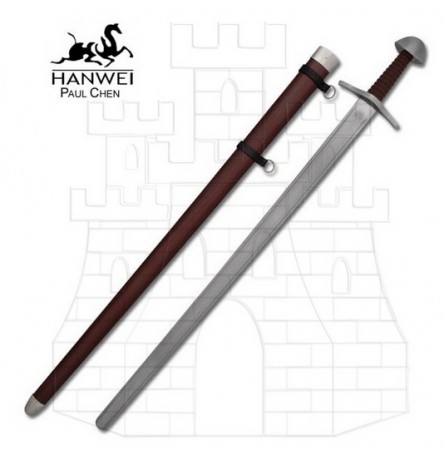
These swords are usually made from high-quality steel, and their tip is designed to be rounded or flattened, making them safe for activities such as fencing training, theater performances, or historical reenactments. The use of blunt tips significantly reduces the risk of injury, which is essential for beginners and those who are still perfecting their combat techniques.
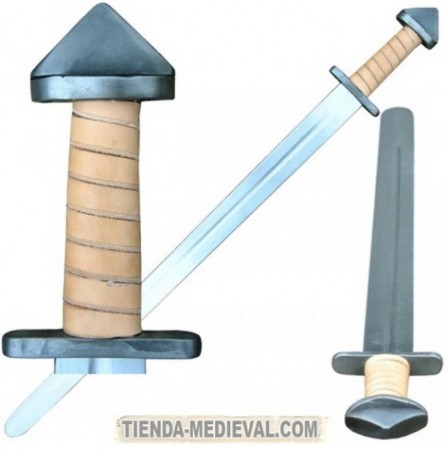
Furthermore, many swords with blunt tips may incorporate additional safety elements, such as a rubber stop or soft materials, providing extra protection. In the realm of theater and historical reenactments, these swords allow actors and reenactors to represent combat scenes without the inherent danger of wielding a sharp sword, protecting both the performers and the audience.
From a legal standpoint, it is important to mention that, in various countries, the sale and use of bladed weapons is regulated. Swords with blunt tips are an excellent option for complying with these regulations, as they offer a safe way to enjoy fencing and martial arts while being preserved in a safe and respectful context towards local legislation.
In our online store, we offer a varied selection of functional swords designed specifically with blunt tips. We invite you to explore our Functional Swords Category B, where you will discover products particularly suitable for training, theater, or historical recreation. We strive to ensure that each sword is of the highest quality and safety, guaranteeing that you acquire a product that is not only visually appealing but also safe to handle in any situation.
The tang, also known as the spine, is an essential component in the construction and performance of a sword. This critical element extends from the blade into the handle, playing a fundamental role in securing the blade to the handle and providing more than just support; it adds stability, balance, and strength to the sword. Often referred to as the weapon's "skeleton," the tang is where the forces applied during use converge, contributing to its effectiveness in combat.
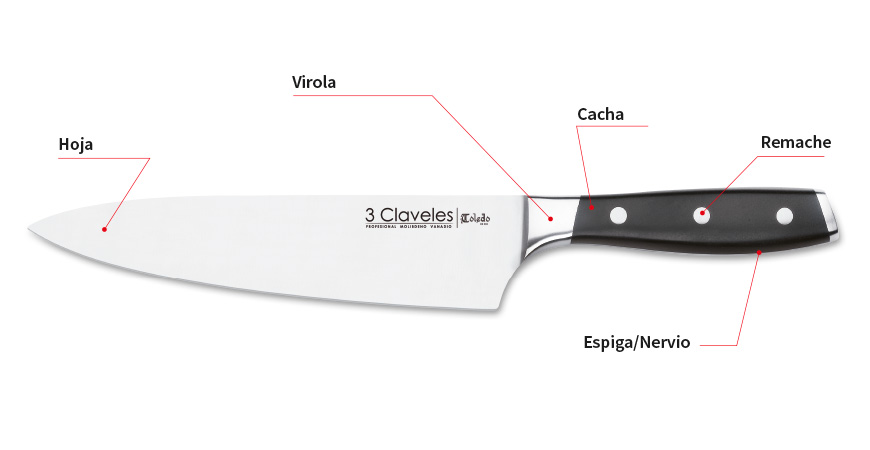
Compared to other types of cutlery, the tang in swords tends to be longer, spanning almost the entire handle. This additional length not only ensures greater control and balance but also allows the user to handle the sword with superior precision and effectiveness. The shape and size of the tang can vary depending on the specific design and purpose of the weapon. For instance, some tangs are square or rectangular to optimize grip, while others take on a more streamlined design that reduces weight without sacrificing strength.
The connection between the tang and the handle is crucial for the durability of the sword. This bond is often achieved through fastening techniques such as welding or riveting, which ensure that the blade is firmly held during use. Additionally, the pommel located at the bottom of the handle not only protects the tang from potential damage but also contributes to the aesthetic of the weapon, being a distinctive element in many sword designs.
The quality of the tang is fundamental; a poor design or a bad manufacturing process can compromise both the maneuverability and functionality of the sword. Investing in swords that have high-quality tangs, as well as performing good maintenance, can not only enhance performance in combats or displays but also preserve the integrity of the weapon over time.
Therefore, the tang or spine of a sword is a crucial factor that ensures a solid connection between the blade and the handle, facilitating balance and stability. This has a significant impact on the user's effectiveness, becoming an aspect that every fencing enthusiast or white weapon collector should consider when selecting a sword. The correct choice of this component can make the difference between a satisfying and a frustrating use experience.
The Kojiri is an essential component of the katana, the renowned traditional Japanese sword, located at the lower end of the scabbard, known as tsukagawa. This piece, with a distinctive inverted cone shape, not only has a practical purpose but also plays an important role in the aesthetic and cultural aspect of the katana. Its presence is vital for understanding the complexity of the craftsmanship behind this emblematic weapon.
From a practical perspective, the Kojiri is designed to protect the bottom of the scabbard, preventing wear and damage that could occur during use, especially in adverse environments or combat scenarios. Its design also helps to prevent the accumulation of dust and dirt inside the scabbard, which is crucial for maintenance and care of the katana. A clean scabbard not only prolongs its lifespan but also keeps the sword in optimal condition for more efficient drawing and use. This is of utmost importance, as any obstruction or dirt can affect the performance and functionality of the katana.
Regarding its aesthetic value, the Kojiri can be made from various materials, such as iron, copper, or brass. It often incorporates intricate and detailed designs that reflect the rich culture of the samurai and the history of the warrior to whom it belongs. The customization of the Kojiri, along with its ornamentation, not only elevates the social status of the owner but also represents their identity and lineage. Each Kojiri can become a genuine work of art, adding significant value to the katana, both historically and as a collectible.
For proper preservation, it is essential to maintain the Kojiri in adequate conditions. Regular cleanings and the application of specific lubricants are suggested to prevent issues of oxidation and corrosion. Additionally, the Kojiri should be protected from impacts and scratches; any damage can not only compromise its aesthetic beauty but also affect the katana's functionality as a whole. Remember that a Kojiri in poor condition could impact the overall performance of the sword.
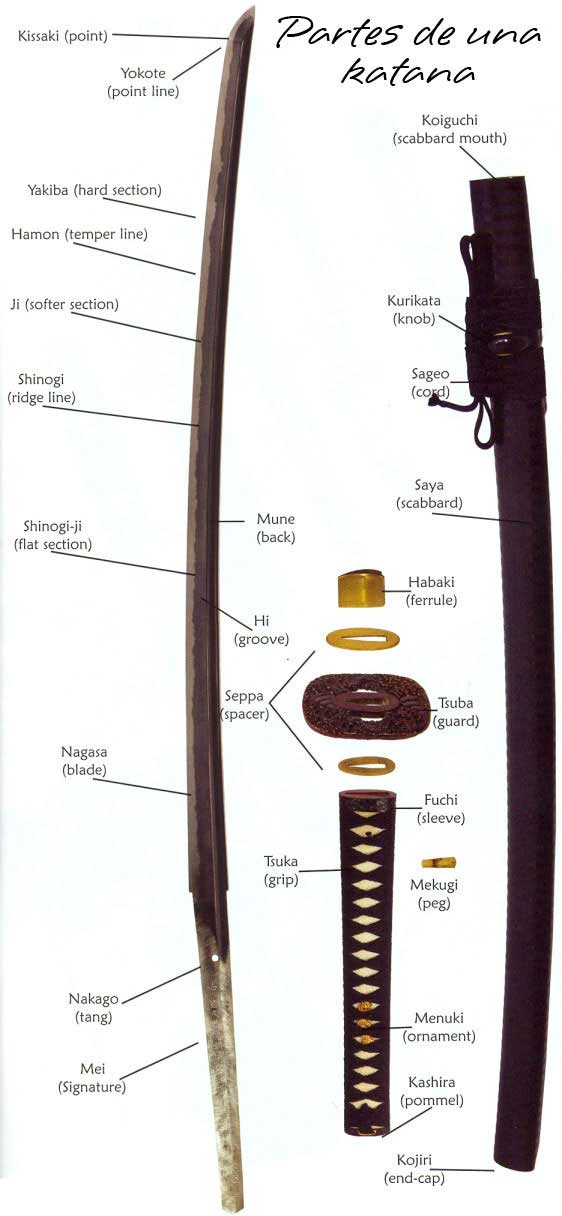
Thus, the Kojiri is not merely a protective mechanism; it symbolizes the rich cultural tradition of Japan. Through its complexities and ornamental details, each katana can tell a unique story, and its care not only ensures its functionality but also preserves the legacy and heritage that each katana represents.
The Kashira is an essential component of the katana, the renowned Japanese sword that merges art and functionality exceptionally. Located at the bottom end of the hilt, this generally conical piece stands out not only for its appealing design but also plays fundamental roles during the use of the sword.
Made from various materials such as iron, copper, or brass, the Kashira often features elaborate decorative designs. These details can reflect the culture, lineage, and various aspects of the owner's personal history, transforming each katana into a unique and meaningful masterpiece. The aesthetics of the Kashira may include symbols, traditional patterns, and representations of nature, artistic motifs that enrich its cultural value.
From a functional standpoint, the Kashira plays a vital role in the balance of the katana. Its weight and shape are crucial in ensuring an adequate weight distribution, allowing the user to manipulate the sword with fluidity and precision. This is especially relevant during cutting movements and in combat situations, where stability becomes a key factor for executing effective performance.
Additionally, the Kashira acts as a stopper, preventing the grip from slipping from the user's hand. This provides a secure and controlled hold at all times, translating into greater safety and optimal performance during practical use. A firm grip is fundamental, as any slippage can compromise not only the user's safety but also the effectiveness of their movements.

To ensure the functionality and integrity of the Kashira over time, proper care and maintenance are imperative. This includes regular cleaning to prevent dirt buildup and avoid oxidation. It is recommended to apply a light lubricant on the metal to protect it and maintain its original shine. Additionally, it is advisable to take precautions to avoid knocks or falls that could damage this piece, as any imperfection or damage could negatively impact both the balance and aesthetics of the katana.
In conclusion, the Kashira is not only a decorative element but an integral part that guarantees the functionality, durability, and safety of the katana as a whole. Every detail, both aesthetic and functional, comes together to pay homage to a millennia-old tradition, ensuring that each katana is not just a combat tool, but also a cultural legacy.
The Menuki is a decorative and functional element found on the handle of the katana, the iconic Japanese sword. This component, made up of small figures crafted using sophisticated metallurgy techniques, not only adds aesthetic value to the sword but also reflects the rich cultural history and lineage of the bearer, becoming a symbol of identity and tradition.
Located on either side of the Tsuka (the handle of the sword), the Menuki is commonly made from materials such as iron, copper, brass, or silver. Each piece is unique and can be adorned with intricate designs that tell stories or symbolize relevant aspects to its owner, such as social status, family, or even spiritual beliefs. These ornaments can vary significantly in complexity, from simple figures to true works of art that add a touch of elegance and distinction to the katana.

In addition to its decorative function, the Menuki plays a practical role by improving the grip on the katana. This element helps to increase friction between the hand and the handle, providing a firmer and more secure control when wielding the sword. Therefore, its presence is essential not only from an aesthetic perspective but also for performance in handling the katana.
It is also important to consider the proper conservation of the Menuki to ensure its longevity and preserve its cultural value. To keep these ornamental pieces in optimal condition, it is essential to protect them from dust and moisture accumulation. The use of an appropriate lubricant to prevent oxidation and corrosion is recommended, as well as avoiding any contact that may cause scratches or damage. These cares are crucial, as any deterioration could affect not only the appearance of the piece but also its history and cultural significance.
In light of all of the above, we can affirm that the Menuki is much more than a simple ornament; it represents a witness to the creativity, tradition, and history that enrich the experience of owning and handling a katana. Its care and attention are fundamental to preserving its essence and ensuring that it continues to transmit its cultural legacy to future generations.
The Mekugi is an essential component in the structure and functioning of the katana, one of the most iconic and representative swords of Japanese tradition. This pin, which is usually made of bamboo, although sometimes other materials such as resin or metal are used, is inserted in the central part of the katana's hilt. Its main function is to secure the blade, keeping it firmly attached to the handle, which prevents any slipping or separation during use.
From a practical point of view, the Mekugi not only ensures that the blade remains fixed in place but also plays a crucial role in the weapon's balance. Proper balance is fundamental for executing fluid and precise movements when handling the katana, allowing the user to make more effective cuts and to better control the sword during combat or training.
Beyond its functionality, the Mekugi also has a safety value. It ensures that the blade is stable and secured, which is vital to prevent accidents that could cause injuries to both the bearer and those around them. In combat situations or during martial arts practice, a damaged or malfunctioning Mekugi can seriously compromise the safety of the samurai or the kenjutsu practitioner.
Caring for and maintaining the Mekugi is essential to ensure its effectiveness over time. It is advisable to keep it clean and, on certain occasions, apply a touch of vegetable oil to protect it from oxidation and corrosion. Additionally, it is essential to conduct regular inspections to detect any signs of wear, cracking, or breakage. If any anomaly is observed, it is critical to replace the Mekugi immediately to ensure both the safety and proper functioning of the katana.
The Mekugi not only has functional and safety importance but is also an element that reflects the mastery in sword making. Skilled artisans ensure that the Mekugi fits perfectly, contributing to the longevity and performance of the katana. Attention to detail and the choice of high-quality materials are equally determining factors in the durability of the Mekugi.

Considering its relevance, the Mekugi should be valued as an indispensable element in the structure of the katana. From its role in safety and balance to the need for proper maintenance, this small pin is crucial for enjoying a safe and effective experience with this symbolic traditional weapon. Adequate attention to the Mekugi not only safeguards the user but also highlights the cultural heritage and craftsmanship of Japanese forging, keeping the samurai tradition alive.
The Fuchi is an essential component of the hilt of the katana, one of the most iconic swords in Japanese culture. Located at the base of the hilt, the Fuchi not only adds an ornamental touch but also serves practical functions that are crucial for the proper use and handling of this traditional sword.
In terms of materials, the Fuchi is usually made from highly resistant and durable metals, such as iron, copper, or brass. The choice of these materials is due to the need for resilience and aesthetics. Frequently, the surface of the Fuchi features elaborate designs and patterns that can have deep meanings, ranging from narrating stories about the owner's lineage to reflecting their social status and the legends of Japanese mythology. This wealth of detail not only adds aesthetic value to the katana but also reflects the craftsmanship and cultural tradition of Japan.
From a functional perspective, the Fuchi secures the Tsuba, which is the disc-shaped handguard. Without this fundamental piece, there is a risk that the Tsuba may shift or move during use, which could compromise the user's safety and control. On the other hand, the Fuchi also contributes to the katana's balance, allowing for more stable and precise handling during the practice of Kenjutsu and in combat situations.
Furthermore, the Fuchi requires proper care and maintenance to ensure its durability and functionality. It is advisable to clean and lubricate it regularly to prevent issues of oxidation and corrosion. Periodic attention is also crucial for spotting scratches or damages that could compromise both its function and appearance. Preserving the Fuchi not only ensures the stability of the Tsuba but also maintains the aesthetic integrity of the katana as a whole.

It is important to mention that knowledge about the Fuchi goes beyond its practical function; it is a gateway to appreciating the history and philosophy surrounding the katana and its use. Understanding the importance of each component, from the Fuchi to the blade, allows enthusiasts and practitioners to connect more deeply with this millennia-old tradition. Thus, the Fuchi becomes a symbol of not only art and functionality but also of a rich and abundant cultural legacy.
The term false edge refers to the edge that is located on the opposite side of the main edge of a blade weapon, such as a knife or sword. This complementary edge, located near the tip of the blade, plays a crucial role in the tool's effectiveness when cutting, as it allows for finer and more precise cuts. Additionally, its design can influence the overall performance of the weapon, making it more versatile in its practical and technical use.
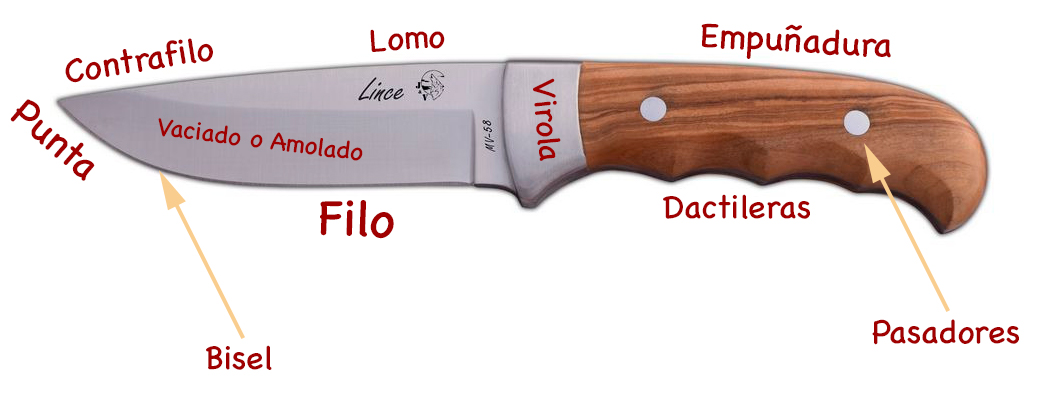
In the context of swords, the false edge is not as common, as most are doubled-edged weapons. However, its presence can be found in certain models designed specifically for combat, where every detail of the blade is considered essential. For example, in medieval swords or Japanese katanas, the false edge can be used in various ways, such as to deflect an attack and make cuts at different angles, thus providing a tactical advantage in close combat situations.
Interestingly, in some swords, the false edge can even be sharper than the main edge, making it a tool not only for finer cuts but also a potentially dangerous element in untrained hands. Therefore, effective handling of a false edge requires specialized skills and training, as improper use can result in injuries to both the wielder and others. Thus, it is essential that those wishing to incorporate such a blade style into their repertoire of bladed weapons seek proper guidance and training in appropriate combat techniques.
When considering the acquisition of a weapon that includes a false edge, buyers should also pay attention to the legal regulations governing the possession and use of bladed weapons in their country or region. This ensures not only their safety but also compliance with the law, promoting responsible and conscious use of these historical and functional tools.
The Tsuba is a characteristic handguard in the shape of a disc that is located at the base of the blade of a katana, the emblematic traditional Japanese sword. This piece is not only fundamental to the design of the katana but also serves various practical and aesthetic functions that add value to the weapon and reflect Japan's rich cultural heritage.
Practically, the role of the Tsuba is crucial. First, it acts as a protection for the bearer's hand, preventing it from accidentally sliding onto the sharp blade during use. This not only allows for safer handling but can also serve as a defensive element in combat situations. Furthermore, the Tsuba contributes to the balance and stability of the katana, making its grip more ergonomic and efficient in maneuvers.
In terms of aesthetics, the Tsuba is made from a variety of materials including iron, copper, and brass. Many Tsubas feature intricate designs and rich decorations that reflect the culture, lineage, and often the identity of the warrior who wields it. These miniaturized artworks can include representations of nature, mythology, and Japanese symbolism, making each Tsuba unique and laden with meaning.
Proper care of the Tsuba is vital to maintain its functionality and beauty over time. It should be regularly cleaned and lubricated to prevent oxidation and corrosion of the materials. It is also important to protect it from physical damage, such as scratches or blows, that could compromise its effectiveness and aesthetics.

In conclusion, the Tsuba is not only an essential component for safety and functionality in the use of the katana, but it is also an artistic expression that encapsulates the rich tradition of samurai culture. With appropriate care and respect, these pieces can maintain their splendor and continue to play a significant role in the practice of the samurai art.
The Habaki is a fundamental piece in the structure of a katana, the iconic Japanese sword that symbolizes the history and culture of the samurai. This metal collar sits at the base of the blade, between the blade itself and the Saya, which is the wooden scabbard designed to protect and store the katana.
With a design that can vary in materials such as brass or silver, the Habaki not only serves a practical function but also provides significant aesthetic value. In its most basic form, the Habaki secures the katana blade in place within the Saya, preventing it from moving or sliding, which is crucial for user safety and maintaining the integrity of the sword.
In addition to its holding function, the Habaki plays an essential role in protecting the blade, safeguarding it from damage and scratches that may occur when drawing or sheathing the sword. This preventive function helps keep the blade sharp and ready for use, as wear and tear on the blade can compromise both its aesthetics and efficacy in combat.
Aesthetically, the Habaki also allows artisans to showcase their craftsmanship in sword making, as many are decorated with intricate designs and decorative details that reflect the culture, lineage, and social status of the owner. This ornamentation not only beautifies the sword but can also be a symbol of identity and tradition.
Caring for the Habaki is just as important as its function. It is advisable to keep it clean and lubricated to avoid oxidation and corrosion. Katana owners should also protect the Habaki from impacts and falls, as any damage may compromise its ability to effectively hold the blade.

In short, the Habaki is an essential component both functionally and aesthetically in the katana, reflecting the rich cultural heritage and expertise of the artisans who craft them. By understanding and properly caring for this piece, katana owners can ensure not only the longevity of the weapon but also its beauty and expressiveness as a symbol of an ancient tradition.
The Saya is an essential component of the katana, the iconic Japanese sword that has become a symbol of honor and skill. It is the wooden sheath specifically designed to contain and protect the blade of the katana, playing a fundamental role in both the safety of the weapon and its aesthetics. Each Saya is crafted with great attention to detail, transforming into a true functional work of art that complements the elegance of the katana.

Traditionally, the Saya is made using various types of wood, with magnolia, cherry, and oak being the most common. The choice of material not only affects the durability of the Saya but also influences the character and resonance of the katana. Each type of wood provides its own aesthetic tone, contributing to the visual beauty of the entire sword.
From a functional perspective, the Saya is crucial for the protection of the blade. By safeguarding the katana when not in use, it prevents damage that could compromise the sharpness and effectiveness of the weapon. Its ergonomic design facilitates safe and comfortable transport, allowing for quick access in urgent situations. Features such as a precise fit and appropriate shape are essential to ensure that the blade remains secure during transport and storage, avoiding movements that could damage both the blade and the Saya.
Aesthetically, the Saya serves as a canvas for artisans looking to embellish it with intricate details, paintings, and special lacquers. These decorative elements not only enrich the appearance of the katana but also pay homage to samurai culture and the lineage of the warrior wielding the weapon. From personal symbols to mythological scenes, each Saya tells a unique story that reflects the bearer’s connection to their history and heritage.
Proper care of the Saya is essential to maintaining its functionality and beauty over time. It is advised to clean it regularly and protect it from dust to avoid harmful accumulations. The application of appropriate lubricants is crucial to prevent rust and corrosion, ensuring that the blade remains in optimal condition. Additionally, it is important to avoid impacts or drops that could compromise the integrity of the Saya, as any damage could affect its ability to protect the blade effectively.
Ultimately, the Saya is much more than just a simple sheath. It represents the veneration towards the katana and the mastery of the artisans who create them. Although its primary function is to protect the blade, its aesthetic and cultural value is equally significant, solidifying it as a vital component of this emblematic sword that has left a profound mark on Japanese history and tradition.
Sageo is a long, thin cord, essential in the use and aesthetics of the katana, the emblematic Japanese sword. This element not only has a practical function but also reflects very significant cultural and artistic aspects within the samurai tradition.
Functionally, Sageo is used to secure the sheath of the katana, known as tsuba, to the waist of the bearer. It wraps around the sheath and is secured with a knot at the kurikata, which is an end of the sheath that can be made of metal or wood. This cord prevents the katana from slipping or falling while the bearer walks or makes movements. In addition, it can also be used as a safety cord to secure the sheath to a surface when the katana is not in use, making it an essential accessory for both handling and presenting the sword.
Sageo is made from a variety of materials, including silk, cotton, and leather. Each of these materials offers different textures and levels of durability. The choice of material and colors can represent the culture, lineage, and personal preferences of the bearer, turning Sageo into an extension of their identity. There are Sageos decorated with intricate designs and patterns that not only serve a practical function but are also true works of art that beautify the katana.
Caring for Sageo is crucial to maintain its functionality and appearance. It is recommended to clean it regularly and apply appropriate lubricant to prevent oxidation and deformation. Additionally, precautions should be taken to protect it from physical damage, as a deteriorated Sageo can prevent the katana's sheath from being properly secured to the bearer's waist.

In summary, Sageo is much more than just a simple cord; it is an essential component of the use and elegance of the katana. In addition to securing the sheath, its design and material contribute to the rich tradition of Japanese swords, highlighting the importance of aesthetics in samurai culture.
The Kurikata is a fundamental component of the katana, the famous Japanese sword known for its remarkable craftsmanship and the rich cultural tradition that surrounds it. This element, which can be made of metal or wood, is located at the top of the scabbard, also known as saya, right at the location of the Koiguchi, which is the opening of the scabbard. Its main function is to hold the Sageo, a cord that ensures the scabbard remains securely tied to the wearer's waist, facilitating transport and access.
In addition to its practical function, the Kurikata plays a significant aesthetic role in the katana. This component not only contributes to the stability and safety of the weapon, but it can also be adorned with engravings and intricate designs, reflecting the rich aesthetics of Japanese culture and the lineage of the owner. There are various materials that can be used in the making of the Kurikata, including wood, bone, ivory, and metal, which affects both its appearance and durability.

Proper attention to the Kurikata is essential for maintaining the integrity and function of the katana as a whole. It is advisable to clean and lubricate it regularly to prevent oxidation or corrosion, especially if it is made of metal. Likewise, the Kurikata should be protected from damage and scratches, as any damage could compromise its efficiency in securing the Sageo and, therefore, the ease of access to the katana in times of need.
In summary, the Kurikata is not simply an accessory; it is a critical element that combines functionality and aesthetics in the katana. Through its proper preservation, the longevity of the sword is ensured, as well as respect for the Japanese tradition and craftsmanship it represents.
The Koiguchi is the opening located at the top of the scabbard of a katana, the emblematic traditional Japanese sword. This component is crucial for the functioning of the katana, as it allows for the smooth insertion and extraction of the blade. Depending on the design and construction of the katana, the Koiguchi can vary in both style and material, giving it a unique and personalized character.
Generally, the Koiguchi can be made from various materials such as wood, horn, or ivory. Additionally, it can be adorned with intricate engravings and designs that reflect the family history and culture of the samurai warrior who possesses it. This aesthetic detail not only enhances the beauty of the katana but can also carry deep symbolic significance.
From a functional standpoint, the design of the Koiguchi must be meticulous: it should be narrow enough to securely hold the blade, preventing it from moving or falling, but also wide enough to allow for a smooth sliding action when drawing or sheathing the katana. This interaction is essential not only for practical use but also for the characteristic sound produced when drawing the katana, known as nukitsuke.
Caring for the Koiguchi is essential for the preservation and effectiveness of the katana over time. It is advisable to keep it clean and lubricated regularly to prevent oxidation and corrosion. Moreover, it is crucial to protect it from any physical damage or scratches, as any imperfection could compromise its function and the safety of the blade's tang of the katana.

In conclusion, the Koiguchi is not only a functional component but also embodies Japan's rich cultural heritage and the art of sword forging. Understanding and appreciating the importance of the Koiguchi contributes to a greater respect for samurai traditions and the craftsmanship behind each katana.
The Tsuka is the handle of the katana, the emblematic Japanese sword known for its craftsmanship excellence and historical relevance. This component is not only crucial for handling and balancing the weapon but also plays an important role in its aesthetics and cultural symbolism. The Tsuka's structure is precisely designed to provide the user with a secure and comfortable grip during combat, implying that its size and shape must adapt to the individual needs of the practitioner.
Commonly, the Tsuka is made of wood, which gives it the necessary lightness and strength. It is also covered with a wrapping called samegawa, which comes from ray skin or, in some cases, from snake. This skin not only beautifies the katana but also provides a firm and non-slip grip. On top of the samegawa, there is the ito, a braided cord that increases the contact area and facilitates a secure hold. The combination of these elements is essential to ensure optimal handling of the weapon.
At the top of the Tsuka, we find the fuchi, a metal sleeve that protects the wood from wear and serves to anchor the tsuba (handguard) and the habaki (sleeve that holds the blade). Its design is not only functional but often features engravings and symbols that reflect the identity of the bearer. At the bottom, the kashira provides a similar aesthetic and functional finish, protecting the end of the Tsuka and offering support for the menuki, which are small decorations that, besides embellishing, help optimize the grip.
The design and quality of the Tsuka are vital for the handling and effectiveness of the katana. A well-built Tsuka can significantly enhance the maneuverability and control of the sword, while poor quality in its manufacture can lead to imbalance and difficulty in use. For these reasons, it is recommended that the Tsuka be carefully selected and crafted by sword forging experts.
The proper maintenance of the Tsuka is essential to ensure both the functionality and durability of the katana. It should be kept clean and lubricated to prevent oxidation and corrosion. Additionally, it is important to protect the Tsuka from impacts; a blow or damage could compromise its integrity and, therefore, the effectiveness of the katana. Meticulous care will prolong the weapon's lifespan and ensure that it maintains its balance and performance during use.

The Seppa are small metal washers that play a crucial role in the structure and aesthetics of a katana. These pieces are located on both sides of the tsuka, which is the handle of the sword, situated between the tsuba (handguard) and the fuchi (cap that closes the end of the handle). Their design and function are essential not only for the secure assembly of the katana but also for preserving its beauty and authenticity.
The primary function of the Seppa is to secure the tsuba and the fuchi in place during the use of the katana. This prevents these parts from loosening or shifting, which is critical for maintaining the balance and maneuverability of the weapon. Additionally, the Seppa act as a buffer, protecting the wood of the tsuka from potential damage that could result from direct contact with the tsuba and the fuchi. Without this component, the durability of the handle would be compromised, affecting the longevity of the weapon.
Another fascinating aspect of the Seppa is their variability in design and finish. You can find Seppa made with the same materials as the tsuba and the fuchi, allowing for aesthetic harmony. Many of them come adorned with intricate engravings or patterns, making them not only functional elements but also artistic pieces that enhance the overall appearance of the katana. This detail is appreciated by both collectors and practitioners of kendo and other martial arts disciplines.
The proper care of the Seppa is crucial to ensure that the katana functions optimally and remains in good condition over time. To do this, it is recommended to clean the Seppa and apply specific lubricants to prevent oxidation and corrosion. Additionally, they should be handled with care to avoid impacts or any type of damage that could affect their effectiveness. Remember that caring for each component of your katana is essential to maintain its integrity and value.

The Bo-Hi, commonly known as Hi, is a distinctive feature of traditional Japanese swords, such as the katana. This groove or channel runs along the blade and serves not only a functional role but also adds an aesthetic significance that enriches the history and culture of these swords.
From a practical standpoint, the Bo-Hi has several important functions. Firstly, its design helps to reduce the weight of the blade, making it easier to handle and maneuver during combat or training. This lightness translates to less fatigue for the user, allowing for more agile and precise movements. Additionally, the Hi helps to improve the balance of the katana, providing a more optimal weight distribution.
The Bo-Hi is also associated with creating a particular sound when making cuts. This distinctive sound, produced when the katana slices through the air, is appreciated by martial arts practitioners, who believe it contributes to the overall experience of using the weapon.
In terms of aesthetic function, the Bo-Hi offers an attractive visual spectacle. These channels can be decorated with intricate designs and engravings that reflect not only the skill of the craftsman but also the culture, history, and lineage of the owner. This aspect can significantly increase the katana's value in the collector's market.
The care and maintenance of the Bo-Hi are crucial to ensure both the effectiveness and the longevity of the katana. It is essential that this groove remains clean and lubricated: this prevents rust and corrosion. It is recommended to use specific oils for knives and swords to keep the blade in optimal condition. It is also vital to protect the Bo-Hi from impacts and blows, as any damage could impair not only its appearance but also its functionality.

In summary, the Bo-Hi is not just a channel in the blade of the katana; it is a feature that enhances its performance, contributes to its aesthetics, and requires diligent care to preserve its value and functionality. Understanding and taking advantage of the peculiarities of the Bo-Hi is essential for any enthusiast or professional who wishes to understand and appreciate the tradition behind the katana.
The Mune is the back section of the blade of a katana, the emblematic Japanese sword that has a rich history and tradition. This area is opposite the edge and plays a fundamental role in the overall structure of the katana. The design and characteristics of the Mune can vary significantly depending on the type of katana and its specific purpose. For example, katanas designed for combat may have a thicker Mune to provide greater strength, while decorative katanas may incorporate a thin and aesthetically elaborate Mune.
Variations in the Mune include different shapes—straight, curved, or even triangular—each of which influences aspects such as effectiveness, balance, and impact absorption capacity. These characteristics are essential not only for the weapon's performance but also for the user's safety, as a well-designed Mune can help minimize vibrations that occur during use.
Besides its practical functions, the Mune has esthetic value. Many Mune are decorated with engravings and designs that reflect the rich Japanese culture and the owner's lineage history. This ornamentation transforms the katana into not only a combat instrument but also a work of art that reflects its heritage.
To ensure the longevity and functionality of the Mune, proper maintenance is crucial. This includes keeping this part of the blade clean and properly lubricated to prevent oxidation and corrosion, which can deteriorate its quality over time. Additionally, the Mune should be protected from impacts and physical damage, as any alteration could compromise its effectiveness and performance during use.

In conclusion, the Mune is an essential part of the katana blade, not only for its functional contribution but also for its esthetic value. Understanding its importance can help enthusiasts and collectors appreciate and properly care for this impressive Japanese tradition.
The Mei is the signature that authenticates and adds prestige to the katana, the legendary traditional Japanese sword. This element not only represents the skill and art of the smith or craftsman who crafted the blade but also plays a crucial role in the history and valuation of the sword. The Mei is engraved on the Nakago, which is the part of the blade that is inserted into the tsuka, the handle of the katana, and can present various variations in its style and shape, reflecting the historical period in which it was created and the aesthetic preferences of the craftsman.
Through the Mei, valuable information can be obtained that ranges from the origin and manufacture date of the katana to its lineage and quality. Occasionally, the Mei also includes relevant data such as the name of the previous owner or even mentions about significant events or battles in which the sword was used, contributing to its personal history and cultural relevance. Due to its importance as a seal of authenticity, the Mei can significantly influence the value of the katana in the collector's market and at auctions.
It is essential to keep the Mei in optimal condition to preserve not only the beauty of the katana but also its heritage and economic value. For this, meticulous care is recommended, including keeping the Mei clean and protected from damage or scratches. Any alteration or deterioration in this signature can negatively affect its authenticity and, consequently, its long-term value in the market for Japanese swords.

The Nakago is one of the most important parts of the katana, the famous Japanese sword. It is the section of the blade that is located inside the tsuka, the handle of the katana. Despite its less visible position compared to the blade, the Nakago plays a fundamental role in the stability, effectiveness, and durability of the weapon.
The design and construction of the Nakago can vary considerably, reflecting both the type of katana and its intended use. For example, some Nakagos have straight and smooth forms, while others display intricate engravings and decorations that can tell a story about the tradition and lineage of the samurai owner. This aesthetic aspect not only adds value but can also be a showcase of the craftsman's skill who made it.
To ensure a secure grip and the proper functioning of the katana, the Nakago must be firmly attached to the tsuka. This is achieved through the mekugi, the pegs that secure the blade to the handle. It is essential that the mekugi are kept in good condition, as any looseness can compromise the user's safety during combat or practice.
The maintenance of the Nakago is essential to ensure both the effectiveness and longevity of the katana. For this, it is recommended to:
- Clean the Nakago regularly to remove any residue or accumulated dirt.
- Apply appropriate lubrication to prevent oxidation and corrosion, especially if the katana is exposed to moisture.
- Protect the Nakago from impacts and blows, as even minor damage can affect its performance and durability.

Caring for the Nakago is not only a matter of functionality but also of respect for the cultural heritage represented by the katana. Each katana tells a story, and the Nakago, although discreet, is a vital component in the narrative of this Japanese martial art. This makes it an element worthy of recognition and care by collectors and practitioners.
The Nagasa is a Japanese term that refers to the length of the blade of a katana, the traditional Japanese sword known for its beauty and precision. This component is fundamental not only for the functionality of the weapon but also for its cultural and aesthetic symbolism within the historical context of Japan.
The Nagasa can vary in length, typically ranging between 60 and 80 centimeters in a standard katana, although there are variations depending on the style of the katana and its specific use. For example, katanas designed for combat may have a longer Nagasa to provide greater reach, while those intended for practice or precise cuts may opt for shorter and more manageable blades.
The measurement of the Nagasa is done from the base of the blade, where it joins the tsuba (the guard), to the kissaki, the sharp tip that defines the end of the blade. This length not only affects performance during combat but also has an aesthetic impact. Many master blacksmiths decorate the blade with intricate engravings that exemplify the legacy and culture of the Samurai, incorporating symbols that reflect the life philosophy of its owner.
The care of the Nagasa is essential to preserve the effectiveness and longevity of the katana. It is recommended to perform periodic cleaning and lubrication to prevent oxidation and corrosion. Furthermore, it is important to protect the surface of the blade from impacts and damage, as any imperfection can compromise its performance and functionality. Attention to detail in caring for the Nagasa is a reflection of respect for the samurai tradition and the craftsmanship involved in forging katanas.

In summary, the Nagasa is one of the most important characteristics of the katana, not only for its length and functionality but also for its cultural and aesthetic significance in the context of Japanese history and tradition. Mastering the care and proper use of the Nagasa is essential for any enthusiast of Japanese fencing and sword collector.
The Shinogi-Ji is one of the most important parts of the blade of the katana, the emblematic Japanese sword that has fascinated generations for its art, history, and functionality. It is specifically located between the Shinogi and the Mune, playing a crucial role in both the structure and aesthetics of this prestigious weapon.
Aesthetically, the Shinogi-Ji can showcase a variety of designs and textures, which vary according to the type of katana and the purpose for which it was made. As it is an element that not only serves a function but also reflects the culture and lineage of its owner, master smiths often incorporate images, patterns, and intricate engravings into this part of the blade. In this way, each katana becomes a unique work of art.
Functionally, the Shinogi-Ji is vital. Unlike the thicker and stiffer Shinogi and Mune, the Shinogi-Ji has a smaller thickness and greater flexibility, making it less susceptible to breaking during use in combat or training. This property is essential for the durability and effectiveness of the katana, as a robust but overly rigid blade may be prone to failure in critical situations.
To extend the lifespan and effectiveness of the katana, it is crucial to perform proper care for the Shinogi-Ji. This involves keeping it clean and regularly lubricated, thus preventing oxidation and corrosion, which can be harmful. Additionally, the blade should be protected from blows or impacts that could cause damage, as any imperfection can compromise its performance and, therefore, the safety of the user.

Thus, the Shinogi-Ji not only reinforces the integrity of the katana but also acts as a cultural window into the history and art of making these iconic swords. This makes the knowledge and care of all its components, including the Shinogi-Ji, fundamental for any enthusiast of katanas and samurai culture.
The Shinogi is a fundamental element in the construction of a katana, defined as the line that divides the blade into two faces: the front part (shinogi) and the back part (ura). This line is not only aesthetically pleasing but also plays a crucial role in the dynamics of cutting and the blade's durability. The design of the Shinogi is one of the features that distinguish each katana, reflecting the skills of the craftsman and the tradition of Japanese forging.
There are several classifications of Shinogi, each suited to different needs and fighting styles. Some of the most common forms include:
- Marudome: a rounded design that offers a smoother curve.
- Koshizori: a curved Shinogi that adds grace and efficiency to sword movement.
- Torii-zori: with a more aggressive profile, suitable for fast and aggressive cuts.
Each of these types of Shinogi influences the behavior of the katana during combat, as well as its handling style. For example, a Shinogi with a more pronounced curve may facilitate deeper, more effective cuts in certain techniques, while a straighter one provides stability and control.
Beyond its functionality, the Shinogi can also be a symbol of status and tradition. Many modern katanas feature Shinogi decorated with intricate engravings and motifs that represent the history and culture of their owner. This customization not only beautifies the sword but also seals the connection between the warrior and their heritage.
Maintaining the Shinogi is essential to preserving the effectiveness and longevity of the katana. To maintain its functionality and appearance, it is advisable to follow some care steps:
- Regularly clean the Shinogi to prevent dirt and residue buildup.
- Lubricate the area to prevent oxidation and corrosion, especially in humid climates.
- Protect the Shinogi from impacts and blows, as damage in this area can compromise the sword’s performance.

The Ji is an essential component of the katana blade, the famous Japanese sword that represents not only a combat tool but also a symbol of art, culture, and tradition. This section is located just below the hamon, the wavy line that forms on the blade during the tempering process. Unlike the upper part, which hardens to provide strength and durability, the Ji is characterized by being softer and more flexible, adding versatility to its use.
The composition of the Ji allows it to perform specific functions in combat and training. Its lower hardness facilitates shallower and more precise cuts, which can be crucial in certain fencing techniques, allowing practitioners to execute more controlled movements. Additionally, the Ji can feature a variety of patterns and textures, which not only serve an aesthetic function but are also intrinsically linked to the cultural legacy of the sword's bearer and its maker. This finish can include engravings or artistic details that tell stories of samurai lineages or other significant aspects of Japanese culture.
The maintenance of the Ji is fundamental to ensure the longevity and effectiveness of the katana. It is recommended to keep this area clean and lubricated to prevent oxidation and corrosion, which are common enemies of steel swords. This includes the practice of cleaning the blade after each use and applying specific oils for weapons. Furthermore, special care should be taken to protect the Ji from blows or impacts that may compromise its integrity, as any damage could negatively affect its performance in combat.

In conclusion, the Ji plays a crucial role in both the functionality and the aesthetics of the katana, closely relating to the culture and art surrounding this iconic Japanese sword. Its proper understanding and care are indispensable for any enthusiast or practitioner of Japanese kenjutsu or martial arts, ensuring that the katana is not only an effective combat tool but also a lasting cultural legacy.
The hamon is one of the most fascinating and distinctive features of a katana's blade, the emblematic Japanese sword. This phenomenon manifests as a line that separates the hardened area of the blade, known as tane, from the softer part of the steel, known as kitae. Specifically, the hamon is located at the edge of the yakiba, which is the cutting edge of the blade. The formation of the hamon occurs during the complex process of tempering, which includes a heat treatment where the blade is heated to high temperatures and then quickly cooled in water or oil. This sudden temperature change is what generates the famous hamon line.

The pattern of the hamon is not only an aesthetic element but also reflects the blacksmith's skill and the technique employed during forging. There are various shapes and designs of hamon, among which the nie, nioi, suguha, and notare stand out, each with its particularities that can influence the blade's performance. This characteristic is the result of a careful hammering and tempering process that allows for the creation of a highly functional steel structure.
From a practical standpoint, the hardened area of the hamon is essential, as it provides the necessary strength to make precise and deep cuts, whether in combat or training practices. On the other hand, the softer part of the blade allows for a certain degree of flexibility, which is crucial to avoid fractures during use.
The maintenance of the hamon is of utmost importance to ensure the longevity and effectiveness of the katana. To preserve this feature, it is essential to regularly clean and lubricate the blade, as this prevents problems like oxidation and corrosion. It is also advisable to protect the sword from impacts and damages that could compromise its integrity and functionality.
In conclusion, the hamon is not only an impressive aesthetic trait that highlights the artisan's mastery, but it also plays a vital role in the overall performance of the katana. Understanding its nature and properly caring for it is essential for enthusiasts and collectors of these magnificent Japanese swords.
The **Yakiba** is one of the most important parts of the katana, the emblematic Japanese sword, characterized by its curved and sharp blade. Specifically, the Yakiba refers to the edge of the blade, which is vital for making precise and effective cuts, both in combat situations and in martial practice and training.
The Yakiba is classified into several types, each with a unique design that influences its performance. Among the most notable types are:
- Suguha: This type features a straight edge line, allowing for clean and precise cuts.
- Notare: Its wavy characteristic provides aesthetic beauty and functionality, improving cutting capability.
- Gunome: It has a semicircular shape, which provides additional confidence in the cutting technique.
Each style of Yakiba has its particularities that can affect the effectiveness of the katana in various circumstances, whether during combat or training. Additionally, the Yakiba consists of different sections that are fundamental to its performance:
- Hamon: It is the visible line on the edge of the Yakiba, resulting from the tempering process during manufacturing. This pattern is not only aesthetically pleasing but also indicates the properties of the steel and the hardness of the blade.
- Ji: This part corresponds to the softer area of the blade, often treated differently than the edge, helping to balance the katana's strength and flexibility.
Proper maintenance of the Yakiba is essential to prolong its functionality and durability. It is recommended to keep the edge clean and lubricated to prevent oxidation and corrosion. Cleaning the Yakiba after each use, along with applying a thin layer of specific oil for weapons, can prevent wear. It is also crucial to protect it from impacts and blows, as any damage to the edge can deteriorate its effectiveness and precision when in use.

Through proper understanding and care of the Yakiba, martial arts enthusiasts and collectors can enjoy the functionality and beauty that this exceptional Japanese sword offers, ensuring its historical and practical value over time.
The yokote is one of the most distinctive and functional features of the katana, the emblematic Japanese sword. This perfectly delineated line separates the blade of the katana from the sharp tip known as kissaki. It is essential to understand that the yokote not only contributes to the aesthetic design of the blade but also has significant implications for the performance and technique of handling the katana.
There are various shapes and angles of yokote, which vary depending on the type of katana and its specific use. Some yokotes are straight, providing a smooth transition between the blade and the tip, while others may be curved and more complex, with transitions that add to the visual richness of the weapon. The angle of the yokote can range from an almost straight cut to a pronounced one, and this variation is designed to optimize performance in combat or in specific cutting techniques.
An essential part of the functionality of the yokote is that it determines the most resistant area of the katana's blade. Just below the yokote is the strongest section of the sword, which is crucial for delivering powerful and effective cuts, as well as for blocking attacks efficiently. In this sense, the yokote also serves as a guide for executing precise cuts, allowing the practitioner to use the sword more effectively and improving the depth and accuracy of each movement.

The importance of the yokote also extends beyond its practical functionality. Often, the yokote includes decorative elements that can reflect the culture, history, and lineage of the owner. This can range from simple marks to intricate designs that tell stories and symbolize the warrior's heritage. This aesthetic component adds significant emotional and cultural value to the katana.
The maintenance of the yokote is essential to preserve not only its functionality but also the integrity of the katana as a whole. To ensure the durability and effectiveness of the yokote, it is vital to keep it clean and lubricated. This helps to prevent phenomena such as oxidation and corrosion, which can compromise both the effectiveness of the sword and its aesthetic appearance. Additionally, care must be taken to avoid hits or damages that may alter the shape or design of the yokote, as this can negatively affect the performance of the katana in use.
The kissaki is the sharp tip of the katana, the emblematic Japanese sword that has been a symbol of samurai culture for centuries. This crucial part of the blade not only serves an aesthetic role but is fundamental for executing precise and deep cuts, which are distinctive features of the Japanese sword art.
There are several shapes and lengths of kissaki, which can vary depending on the type of katana and the specific purpose of its use. In general terms, they can be primarily classified into two types:
- Ikubi kissaki: This type has a rounded shape and is shorter, making it easier to perform more controlled and quick cuts.
- O-kissaki: On the other hand, the o-kissaki is elongated and pointed, designed for deeper and more penetrating cuts, ideal for more aggressive combat techniques.
The choice between these types of kissaki should be carefully considered, taking into account the type of cut one intends to make and the user's personal preferences. Additionally, the kiss, or point of the katana located at the base of the kissaki, is one of the most notable features of the katana's design. It can take various forms and styles, such as the chisel kiss and the hira kiss, and is a reference to the quality and skill of the craftsman who forged the sword.
An essential aspect of maintaining the kissaki is its upkeep. To ensure its effectiveness and prolong its durability, it is crucial to follow certain care practices:
- Keep the kissaki clean and lubricated to avoid oxidation and corrosion, which can compromise its function.
- Protect it from blows or impacts that may cause damage, as any imperfection can negatively affect its performance in combat.

In conclusion, the kissaki is not only an essential element for the katana but also invites reflection on the technique and tradition forged over centuries. Its shape and care are indicative of the respect and mastery that surround the forging of this legendary Japanese sword.
The sheath or scabbard for a sword is an essential accessory for sword owners, as it serves as a protective layer that allows for the safe storage and transport of the weapon. Regardless of whether it is an antique sword, a period recreation, or a collector's piece, having the right scabbard is crucial to ensure its integrity and longevity.
There are various considerations when choosing a sword sheath or scabbard. These can vary in shapes, materials, and designs, and the correct selection must take into account not only the type of sword in question but also the personal needs and preferences of the user. The most common materials for making sheaths include:
- Wood: Usually offers exceptional durability and a classic design. Wooden sheaths are elegant and can be carved with intricate details.
- Leather: This material is popular for its flexibility and aesthetics. Additionally, leather can provide a non-slip effect on the sword handle.
- Metal: They offer great protection against impacts but can increase weight and may require special care to avoid corrosion.
- Plastic: Generally lightweight and economical, although they may not provide the same durability as other materials. Ideal for recreational or temporary use.
The design of the sheaths is also diverse, ranging from simple and functional options to decorative models that may include artistic details, engravings, or inlays. Some sheaths are equipped with closures and straps that secure the sword inside, preventing any accidents or damage.
When selecting a sheath or scabbard, it is important to consider the intended use of the sword. If it is a display item, aesthetic features may be prioritized. On the other hand, for activities like martial arts practice or historical recreation, durability and ease of transport will be key aspects.
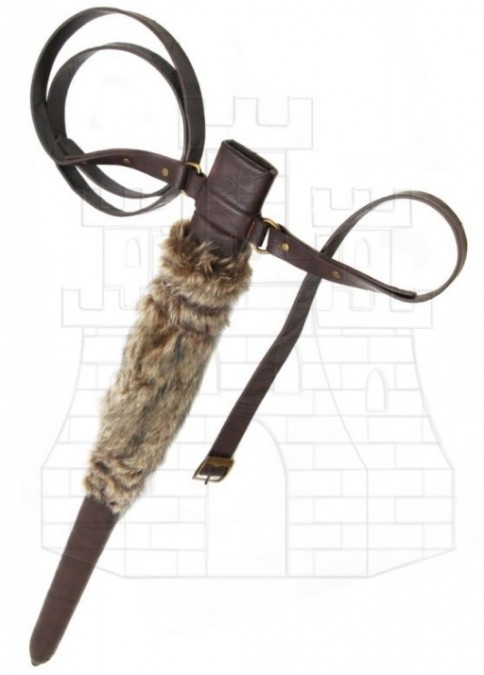
Choosing the right sheath is not just a matter of protection, but it can also reflect the personality and aesthetics of the bearer. Additionally, regular maintenance, such as cleaning and caring for the materials, is vital to prolong the lifespan of both the sword and the scabbard. Be sure to follow the manufacturer's recommendations for the specific care of each material.
The blade edge of the sword is one of the most essential and determining characteristics of this type of weapon, as its cutting edge plays a crucial role in its effectiveness in combat. This edge is designed not only for cutting; it is also fundamental in the use of various disarmament and defense techniques, which can make a difference in high-pressure situations. The geometry and design of the edge can vary considerably depending on the type of sword, whether it is a katana, a foil, or a longsword, making each model have a distinctive purpose and be optimized for different fighting styles.
It is important to note that the edge is not restricted to swords; other blades, such as knives, daggers, axes, and machetes, also possess an edge whose configuration determines their capacity and effectiveness. Characteristics such as the shape, thickness, and angle of the edge directly influence the cutting ability and, therefore, the performance of the weapon. Understanding these variables is crucial for selecting the right tool for each activity, thus ensuring optimal performance in practical or training situations.

The sharpening process of the edge can be carried out using various techniques, ranging from manual methods to the use of specialized tools, such as sharpening stones or electric machines. Keeping a well-sharpened edge is critical not only in combat situations but also during training activities that require precision and speed. Proper maintenance of the edge not only improves the weapon's performance but also increases safety when handling it, minimizing the risk of accidents.
In addition to its functionality, the blade edge can have aesthetic and symbolic connotations. Many swords feature decorative designs on their edge, which not only enhance their visual appeal but may also reflect the cultural heritage or history of the owner. This aspect turns the sword into an object of art, highlighting the craftsmanship of the blacksmith and the cultural significance it represents.
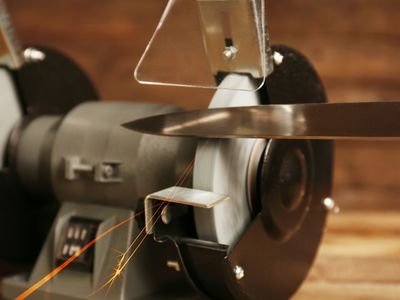
Taking care of the edge is vital to ensuring its longevity and effectiveness. It is recommended to clean and lubricate it regularly with suitable products, which helps prevent oxidation and corrosion. It is also essential to protect the edge from impacts and falls, as any damage could compromise its performance and user safety. This is especially relevant for collectors and weapon enthusiasts, who must pay attention to the storage and display conditions of their possessions. Additionally, it is crucial to respect the applicable legal regulations concerning the possession and use of blades, which may vary by jurisdiction and can include requirements for registration, storage, and transportation, which is essential to ensure responsible and safe ownership.
The blade of a cutting weapon is the key component that provides both performance and functionality to a wide range of weapons, including swords, knives, daggers, axes, and machetes. From the guard, designed to protect the user's hand, to the tip, the blade plays a crucial role in combat techniques, enabling various actions such as cutting, striking, or piercing targets. The specific characteristics of the blade, such as its length, width, and shape, vary significantly and are fundamental to its effectiveness in different contexts of use, whether in culinary activities, recreational use, or combat sports.

Regarding manufacturing materials, blades can be found made of various types of steel, each with characteristics that impact both their performance and maintenance. Below are some of the most common types:
- Carbon steel: This type of steel is highly valued for its ability to maintain a sharp edge, making it an excellent choice for applications that require precise cuts. However, proper care is crucial, as it can rust if exposed to corrosive elements.
- Stainless steel: Offers superior resistance to corrosion, making it ideal for those looking for a low-maintenance and highly durable weapon, especially in humid environments or where water exposure is constant.
- Damascus steel: In addition to its strength, this type of steel is famous for its ornamental surface patterns, making it a popular choice among those who value both aesthetics and functionality in their weapons.

In addition to materials, the shape of the blade is a crucial aspect that affects its performance. Some of the most common blade shapes include:
- Straight blades: Especially useful for precise and direct cuts, they are ideal for tasks that demand precision.
- Curved blades: Allow for smoother movement, making them perfect for tasks that require broader and more dynamic cuts.
- Sharp-tipped blades: These are specifically designed for more effective piercing, being very useful in situations that require quick and effective penetration.
The choice of blade shape should be based on the combat technique that is planned to be used, as well as the specific conditions of each confrontation. Furthermore, the personal style and preferences of the user are equally fundamental when selecting a weapon, providing a subjective factor that should not be ignored.
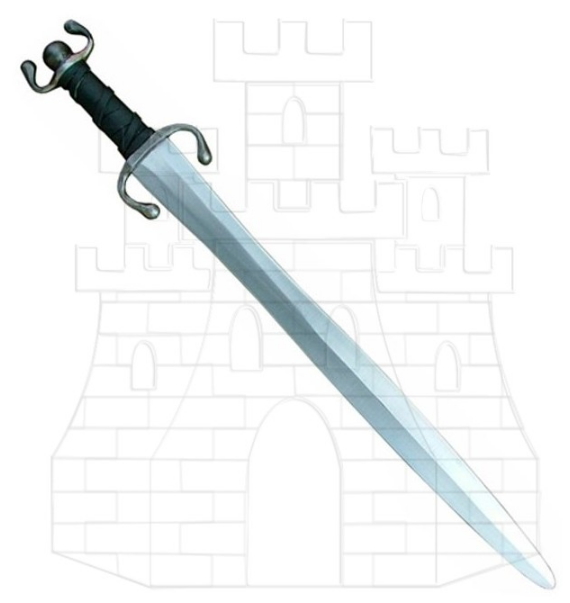
The proper maintenance of the blade is essential to maximize its lifespan and effectiveness. This maintenance includes regular practices of sharpening, cleaning, and the application of protective oils to prevent rusting. Neglecting these aspects can compromise the integrity of the weapon, resulting in ineffective performance, especially in critical situations. Careful maintenance not only prolongs the life of the blade but also enhances its overall performance during use. Additionally, this maintenance helps preserve the aesthetic and functional value of the weapon over time.
Finally, understanding the nature of the blade is fundamental, not only for collectors and enthusiasts of cutting weapons but also for martial artists and combat aficionados. Making informed decisions when selecting a blade involves considering a wide variety of factors ranging from combat techniques and personal preferences to the intended use, ensuring that each user finds the weapon that best suits their specific needs and objectives.
The groove, also known as blood groove, is a prominent feature found on a sword blade. This channel, which can vary in design, depth, and length, serves both practical and aesthetic functions in the construction and use of the sword, becoming a key element in its functionality.
From a practical standpoint, the groove has several important benefits:
- First of all, it reduces the weight of the blade, making it easier to handle and maneuver the weapon during combat.
- Secondly, by removing some of the material from the blade, it improves the balance of the sword, allowing for more precise control in its use.
- It also plays a crucial role in helping to prevent the blade from sticking to the bone when striking a target, which can be especially beneficial in combat situations.
- Additionally, the groove reduces air resistance, allowing the blade to move more quickly during motion, increasing its effectiveness in attack.
- Finally, this feature allows for blood and other fluids to drain from the blade, improving safety and ease of handling the sword, particularly in situations where these fluids could interfere.
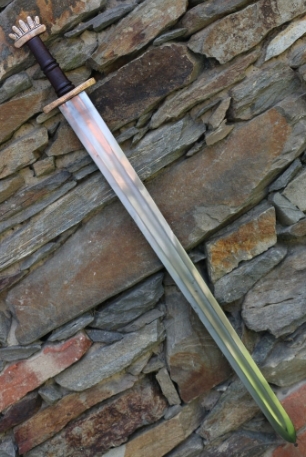
Regarding its aesthetic function, grooves offer significant visual appeal and can vary widely in design. Styles can range from simple and straight grooves to more complex and intricate patterns. These may include:
- Historical symbols, reflecting the cultural heritage and tradition of the specific sword model.
- Geometric patterns that add an artistic touch to the piece, making it visually stunning.
- Artistic figures that may tell stories or represent myths and legends associated with the sword.
Furthermore, grooves can be adorned with luxurious materials such as gold, silver, or even precious stones, enhancing their aesthetic appeal and collector value. When choosing a sword, it is important to consider the type of groove and how it relates to the user’s needs and preferences. A well-designed groove not only enhances the functionality of the sword but also highlights its beauty and may have a profound historical significance.
The bevel is a fundamental element in the design and functionality of bladed weapons, located on the edge of the blade. Its main function is to optimize the cutting capability of the weapon, providing a specific angle that allows for efficient cutting and piercing. The shape and angle of the bevel are critical in how the weapon interacts with different materials, which is crucial for its performance.
The variability in the angles and widths of the bevel depends on the type of weapon and its intended use. This means that each bladed weapon can present a unique bevel design tailored to its function. Below, we will explore several examples that illustrate the importance of the bevel in different contexts:
- Kitchen knife: This type of knife usually has a wider and less sharp bevel, enhancing precision when cutting soft foods like vegetables and fruits. This design facilitates smooth cutting and minimizes the effort required, making cooking a more enjoyable and efficient activity.
- Tactical knife: Unlike the kitchen knife, this knife features a narrower and sharper bevel, allowing it to easily penetrate hard materials. This characteristic makes it particularly useful in situations where deep and quick cuts are necessary, such as in survival activities or self-defense.

The shape of the bevel also varies significantly depending on the type of weapon. Some examples are:
- Japanese swords: Katanas feature a curved bevel, known as "hamon." This design not only has aesthetic appeal but also improves their cutting capability due to the distinctive shape of the blade, which allows the sword to make safe and effective cuts.
- Machetes: Typically, machetes have a straight and uniform bevel designed to maximize their effectiveness in cutting vegetation, such as grasses and branches. This type of bevel facilitates tasks in rural or jungle environments, where resilience and performance are essential.
The bevel is therefore a critical part not just of performance, but of the user's safety. It is vital to keep the bevel sharp, as a dull edge can decrease the weapon's effectiveness and increase the risk of accidents. An additional effort to make cuts may lead to a higher risk of injuries or damage to the equipment.
For this reason, it is essential to pay attention to the care and maintenance of the bevel, ensuring that these tools remain in optimal working condition. This not only guarantees the durability and effectiveness of knives, swords, and machetes but also contributes to safe and responsible handling of bladed weapons.
Always remember to follow the manufacturer's recommendations regarding sharpening and maintenance to ensure safety and performance in the use of your tools.
The grip of swords is an essential component of the design and functionality of these weapons. It is the part of the handle located opposite the blade, allowing the user to hold and maneuver the sword effectively and safely. It is made from a variety of materials, which can include wood, metal, bone, ivory, and various synthetic materials, each of which contributes not only aesthetics but also grip and durability characteristics.
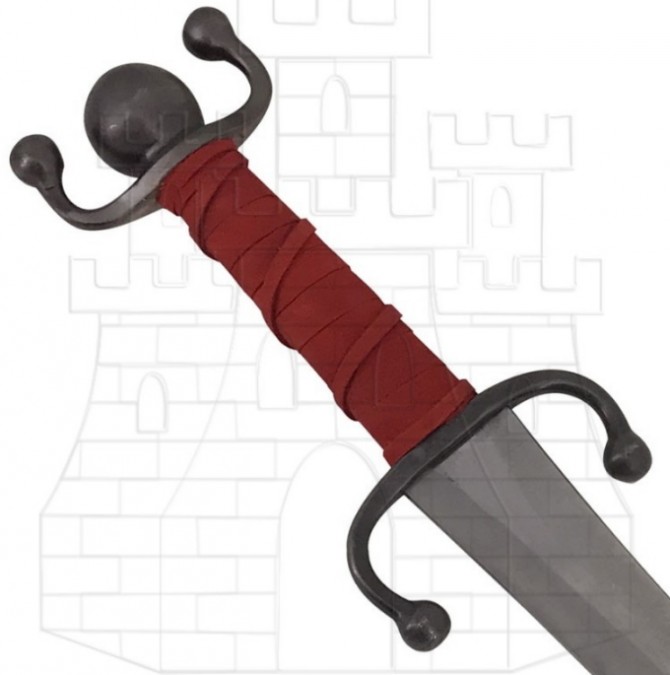
Beyond its practical aspect, the grip can also serve a decorative and representative function. Many designs include symbolism and historical figures, conveying a sense of heritage and legacy that can be significant for the bearer. Therefore, the selection of a sword's grip should consider not only the physical characteristics of the blade, such as its length, but also the diameter and the hand length of the user. This will ensure that the grip suits their personal needs, providing a more comfortable and effective experience.

The grip also plays a fundamental role in the balance of the sword. The correct weight distribution between the blade and grip allows the bearer to handle the weapon with greater ease and precision, which is essential in combat situations or during training. Some grips are designed in such a way that they can be used as a secondary weapon, thus expanding their functionality and utility in various circumstances. This ensures that the user is prepared to attack or defend themselves at any moment.
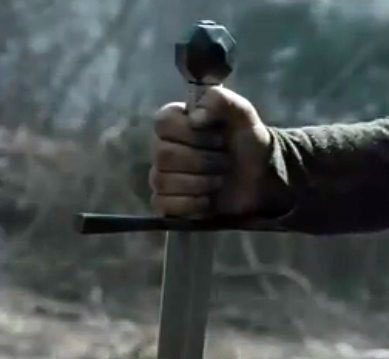
Grips are not exclusive to swords, but can also be found in a wide range of bladed weapons such as knives, daggers, machetes, katanas, and axes, among others. Each type of weapon will have its own grip shape and design to suit its specific use, providing a hold that maximizes effectiveness in combat. For this reason, it is always advisable to consider the characteristics of the grip when choosing any type of bladed weapon, ensuring that it not only fits the user's style but also meets the required safety and functionality standards.
Tameshigiri is a traditional Japanese discipline that focuses on the skill and precision of cutting with a katana, the iconic Japanese sword. Through this practice, experts assess the sharpness and effectiveness of the sword by performing cuts on targets designed to simulate the resistance of the human body.
.jpg)
Definition and Origins
The term Tameshigiri translates as "test cut" and its origins date back to the Edo period (1600-1868). During this time, samurais needed to ensure their katanas were properly sharpened to be effective in combat.
Initially, cuts were performed on human bodies, such as those of executed criminals, as well as on less controversial materials like rice straw and wood.
History and Evolution
At the height of the samurai era, Tameshigiri was considered essential for assessing the quality of swords. The experience of swordsmen was fundamental, and the results of the tests were inscribed on the nakago, the sword's tang. This record, known as tameshi-mei, conferred significant value to the katana.
.jpg)
Over time and with new ethical standards, Tameshigiri eliminated the use of human bodies, instead using materials such as tatamis, bamboo, and makiwara, all prepared to simulate the density of the human body.
Objectives and Techniques
- Tatami-omote: the surface of a tatami that represents human flesh.
- Bamboo: used to simulate the resistance of bones.
- Makiwara: a type of rice straw intended for training.
Cutting techniques, such as Kesa-giri (diagonal cut) and Kiri-age (upward cut), are essential for Tameshigiri. Each movement requires precise coordination and a focus on concentration.
Cultural Importance
Tameshigiri is not just a martial technique; it is a symbol of Japanese culture and tradition. This practice represents not only a physical challenge but also a path towards mental discipline and self-knowledge.
.webp)
The benefits of Tameshigiri extend beyond combat, promoting qualities such as concentration and perfection in the art of cutting.
Kendo, known as 'the way of the sword', is a Japanese martial art that merges technique, discipline, and culture. This exciting sport offers its practitioners not only combat skills but also a profound personal development and connection to Japanese history. Below, we will explore its origins, principles, and benefits.
Origin and History of Kendo
Kendo has its roots in kenjutsu, the ancient fencing practice used by samurais in feudal Japan. During the Meiji Restoration, the use of the katana was prohibited, leading to the evolution of Kendo as a discipline focused on education and sport.
Values and Philosophy of Kendo
Beyond physical skills, Kendo emphasizes essential values that shape the personality of its practitioners:
- Courtesy: Kendo practice promotes respect and education among peers.
- Self-discipline: Through training, patience and perseverance are cultivated.
- Personal Development: The goal is to turn the individual into a better version of themselves.
Benefits of Kendo
Kendo provides multiple physical and mental benefits:
- Physical Improvement: It increases cardiovascular endurance, strength, and balance.
- Concentration: It fosters mental discipline and the ability to remain calm under pressure.
- Cultural Connection: It provides a deep understanding of Japanese tradition and history.
Equipment and Uniform
To practice Kendo, a specific set of clothing and tools is required:
- Keikogi and Hakama: Traditional clothing that allows freedom of movement.
- Bogu: The protective armor, including mask and body protection.
- Shinai: The bamboo sword used for training.
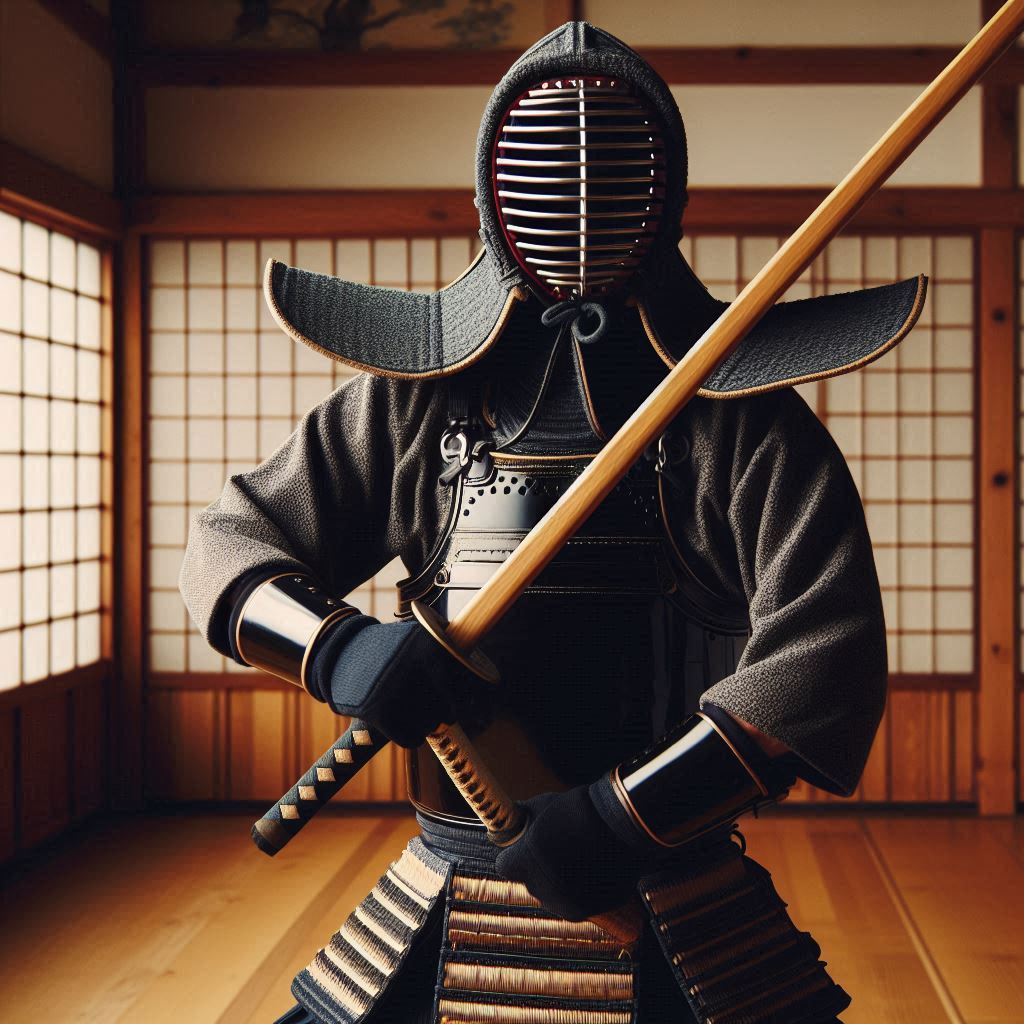
Techniques and Movements
Kendo is characterized by precise and fluid execution of movements. Among the most common techniques are:
- Men: Strike to the head.
- Kote: Strike to the wrist.
- Do: Strike to the torso.
- Tsuki: Thrust to the neck.
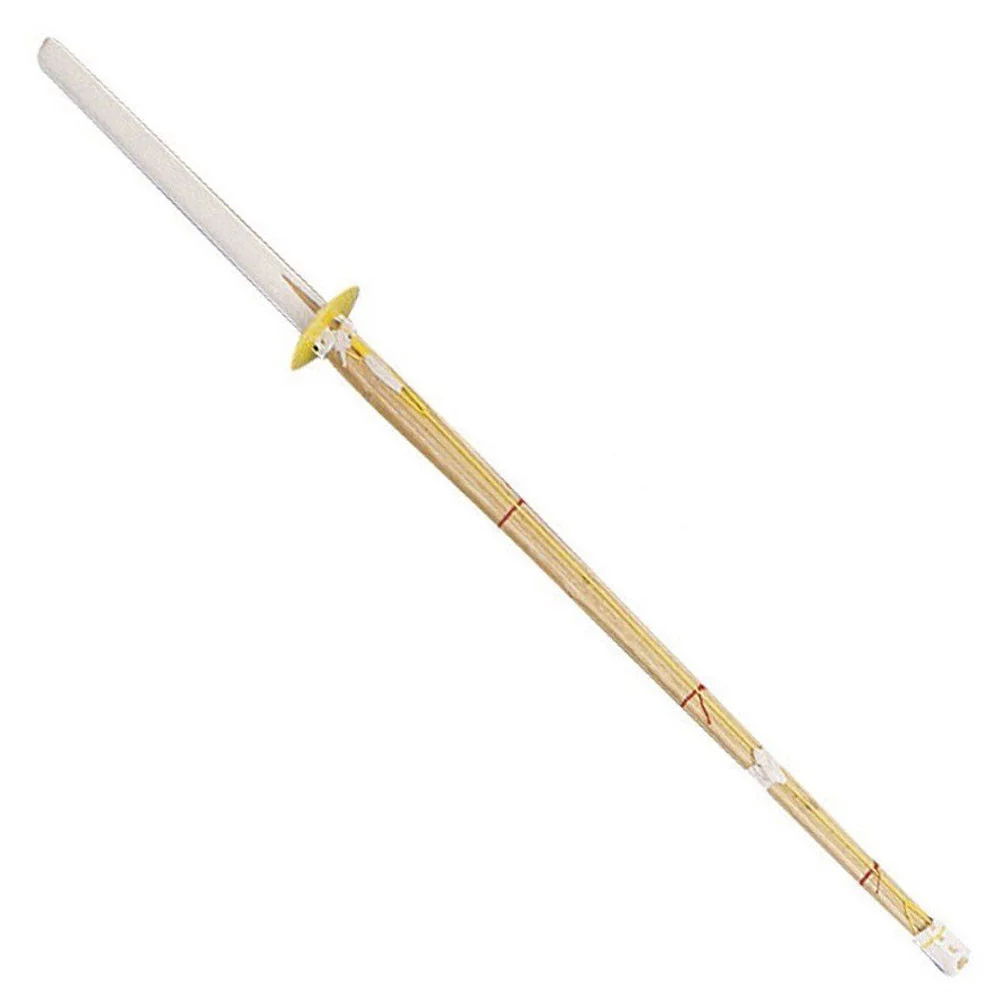
Kendo Community and Culture
Kendo merges physical discipline with Japanese culture, creating a united community that shares respect and virtues. It is not just a martial art, but a way of life that values growth and interaction among its members.
Iaido (居合道) is a Japanese martial art that focuses on the practice of using the katana, the famous Japanese sword. This martial art not only emphasizes technique but also promotes spiritual and mental development, transforming each movement into a form of moving meditation.
Origins of Iaido
The term “Iaido” has its roots in the 16th century, emerging in a context where samurai had to be prepared for combat. Hayashizaki Jinsuke Shigenobu, the founder of Shin Muso Hayashizaki-ryu, is a central figure in the history of this discipline, with his impact recognized in its evolution.
Characteristics of Iaido
One of the most important characteristics of Iaido is its underlying philosophy. The name “Iaido” comes from the Japanese phrase “tsune ni ite, kyu ni awasu,” which translates to “always be prepared for any situation.” This mindset reflects in every aspect of the practice.
Techniques and Movements
The movements of Iaido include specific techniques that are fundamental to the practice:
- Nukitsuke: Initial movement of drawing the katana.
- Kiriotoshi: Final strike delivered in a downward motion.
- Chiburi: Symbolic process of cleaning the blade after combat.
- Noto: Action of sheathing the katana back into its scabbard.
Each kata (form) addresses specific combat situations, allowing practitioners to face imaginary opponents under various conditions.
Practice of Iaido
Iaido is performed individually, using either a real katana or a replica known as iaito. The practice focuses on the smooth and precise execution of movements, requiring each iaidoka (practitioner) to have great concentration and mental focus.
Benefits of Iaido
Beyond being a martial discipline, Iaido offers multiple benefits, such as:
- Development of mental concentration.
- Promotion of inner calm in stressful moments.
- Improvement in coordination and body control.
Styles and Organizations
There are different styles of Iaido, such as Muso Shinden-ryu and Mugai-ryu. Each style has its techniques and approaches, and many practitioners are part of organizations like the All-Japan Kendo Federation, which establishes guidelines and standards for the practice of Iaido.
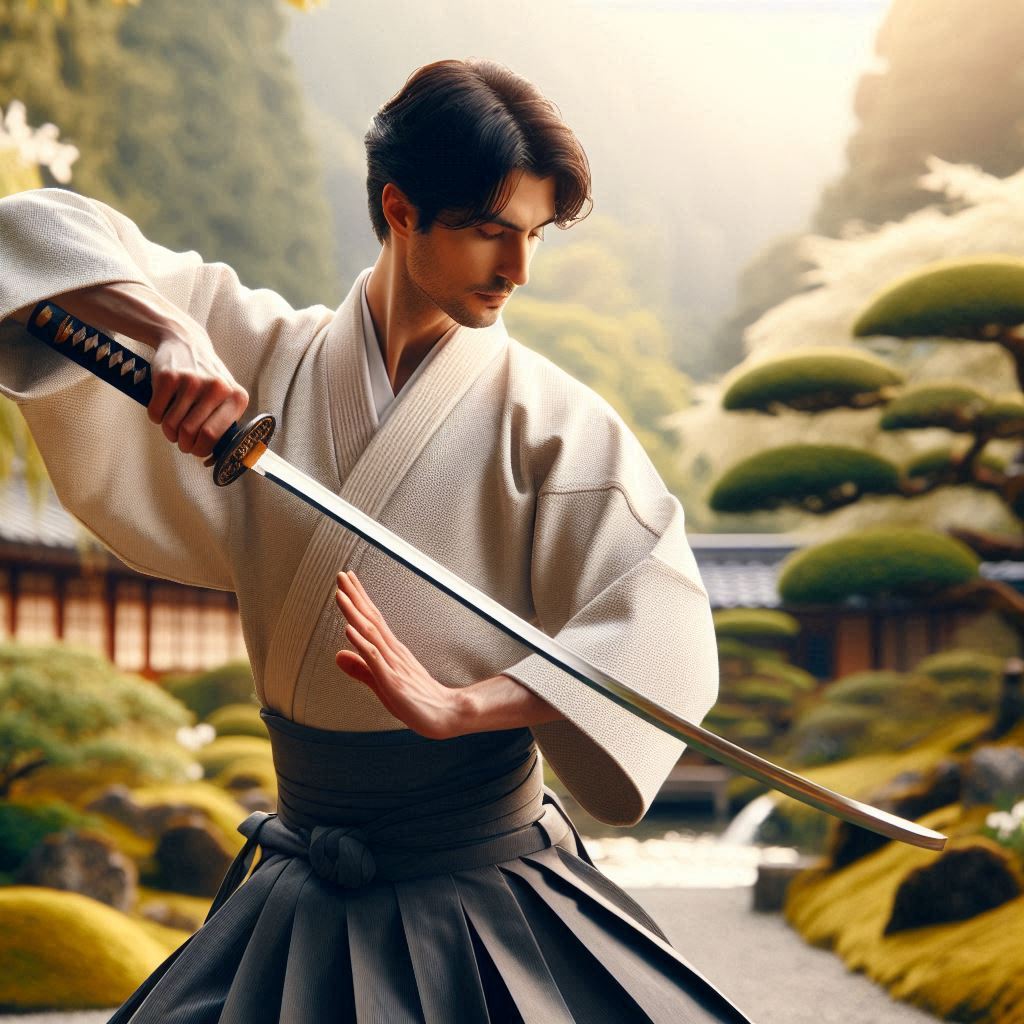
Iaido is more than just a simple combat technique; it is a rich tradition that combines physical skills with a deep spiritual philosophy, allowing practitioners to face any situation with confidence and skill.
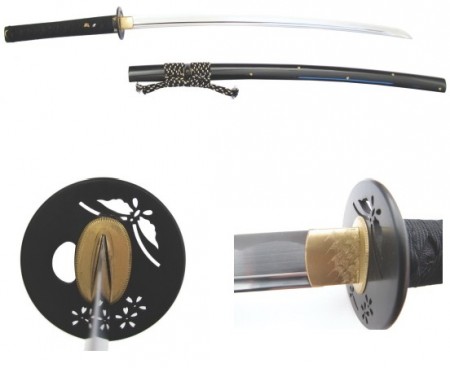
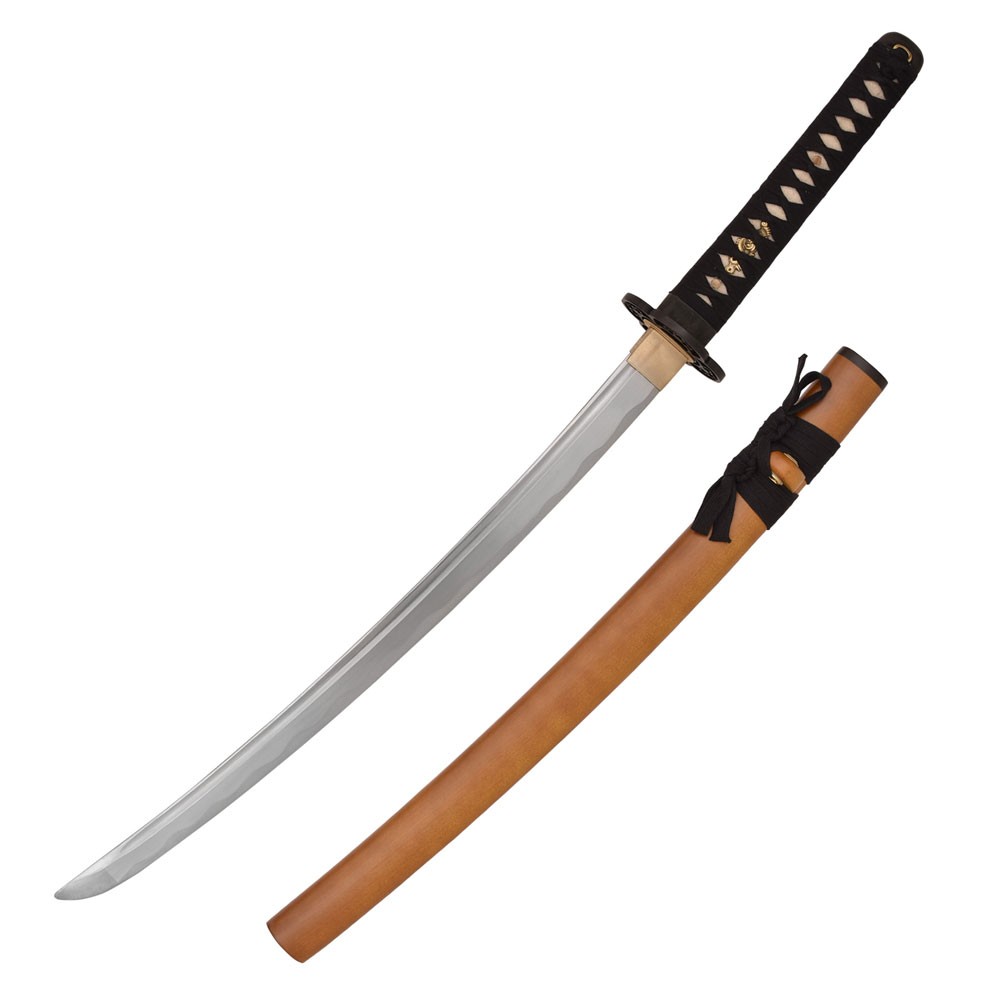
Aikido is a Japanese martial art that stands out for its focus on harmony and self-defense without inflicting harm on the opponent. Founded by Morihei Ueshiba in the 20th century, Aikido is an art that combines technique with philosophical depth, making it a unique and enriching practice.
Origin and Philosophy of Aikido
The word "Aikido" translates as "the way of unifying energy" or "the way of harmonious spirit." Ueshiba developed this discipline as a self-defense technique that seeks not only to protect the practitioner but also to avoid harm to the attacker. Its philosophy is based on the concept of "masakatsu agatsu katsuhayabi," which means the true and ultimate victory over oneself.
Techniques and Methods
Aikido focuses on a variety of techniques, including:
- Throws: Ways to unbalance the opponent and project them to the ground.
- Immobilizations: Methods to control and neutralize the attacker without causing harm.
- Weapon use: The bokken (sword), tantō (knife), and jō (staff) are used for learning and practice.
One of the distinctive features of Aikido is its focus on the principle of non-resistance, where the energy of the attacker is used against themselves. This includes key movements such as:
- Irimi: Entering the attacker's space.
- Atemi: Techniques to distract or destabilize the opponent.
- Kokyu-ho: Breathing and energy control.
- Sankaku-ho: Triangular movements that facilitate connection with the opponent.
Focus on Personal Development
Beyond physical techniques, Aikido promotes personal and spiritual growth. Ueshiba believed that through this practice one could perfect character and develop wisdom. Practitioners work on achieving mental calm and emotional control, allowing them to handle conflicts in a peaceful and effective manner.
Global Impact and Popularity
Today, Aikido is practiced in over 140 countries around the world, standing out as one of the most popular martial arts. Although its origin is Japanese, it has been adopted by various cultures seeking not only self-defense but also harmonization and self-growth through its teachings.
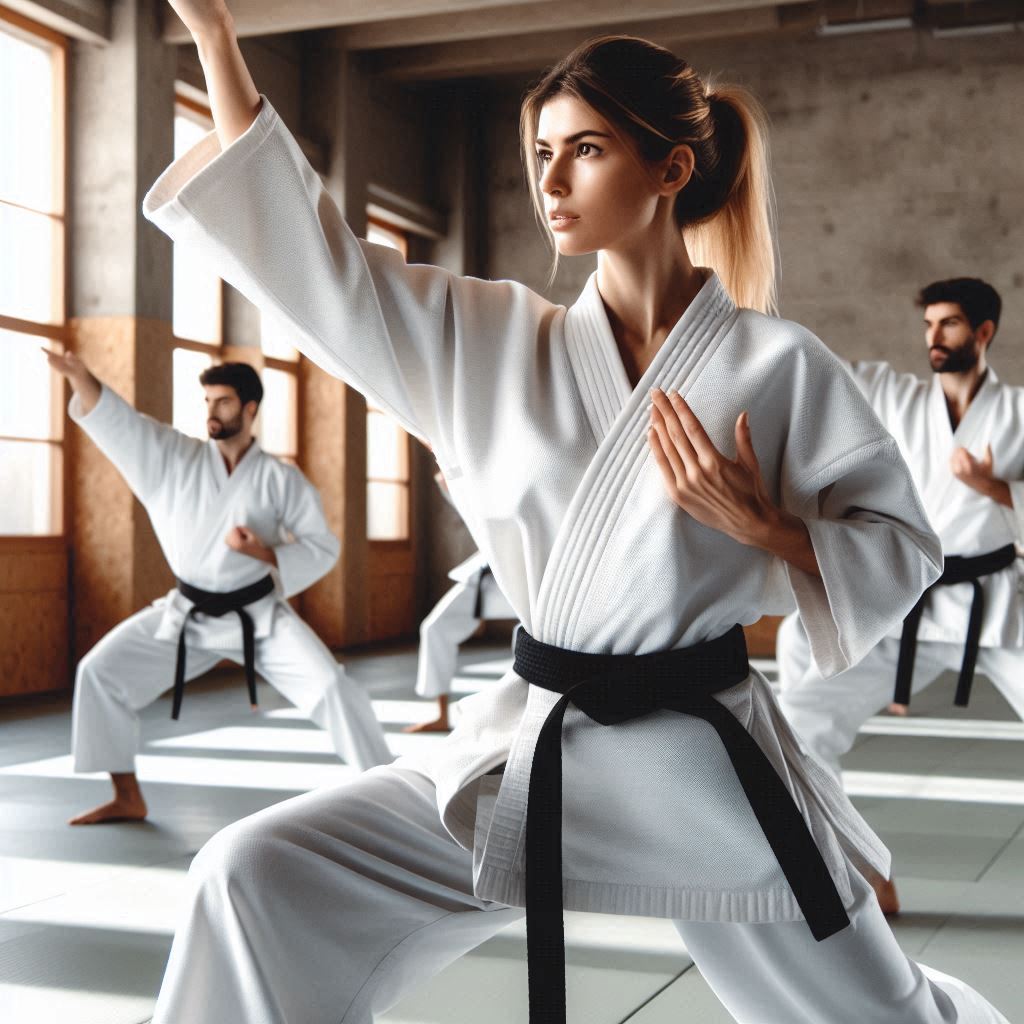
Aikido offers an enriching experience that goes beyond physical defense, promoting a philosophy of peace, respect, and harmony that can be applied in everyday life.
Battojutsu is a discipline of traditional Japanese fencing that focuses on the technique of drawing the sword and making a cut in one fluid motion. This martial art has been fundamental in the history of the samurai and still has a strong presence in contemporary fencing practices.
Origins of Battojutsu
The word "Battojutsu" (抜刀術) translates to "techniques for drawing the sword." This martial art played a crucial role during Japan's feudal era, where warriors, known as samurai, needed precise and rapid skills to face any kind of combat. Skill with the sword was essential for survival and personal defense.
Differences with Other Disciplines
It is common to confuse Battojutsu with other related practices such as Iaido and Iaijutsu, but there are fundamental differences worth highlighting:
- Iaido: Focused on techniques that involve drawing, striking, and re-sheathing the sword, emphasizing movement control and mental discipline.
- Iaijutsu: More defense-oriented training with techniques that include both drawing and striking. Although it shares similarities with Battojutsu, its focus is more on defense than attack.
- Battojutsu: Specializes in quick attacks with the sword still in its sheath, requiring exceptional speed and precision to make effective cuts before the sword is fully drawn.
Key Techniques of Battojutsu
Among the most important techniques taught in Battojutsu, we find:
- Nukitsuke: The act of drawing and cutting simultaneously.
- Furikaburi: Blade movement that sweeps through the air.
- Kirioroshi: Downward cut.
- Chiburi: Technique for cleaning the blood from the blade.
- Noto: Correctly re-sheathing the sword.
Importance of Battojutsu
Beyond its value as a martial technique, Battojutsu represents a cultural and artistic legacy. During the feudal era, samurai underwent rigorous training to master these techniques, reflecting great discipline and a deep respect for the art of the sword. Today, Battojutsu continues to be practiced in numerous schools, where students not only learn about fencing but also about the traditions and values that accompany this art.
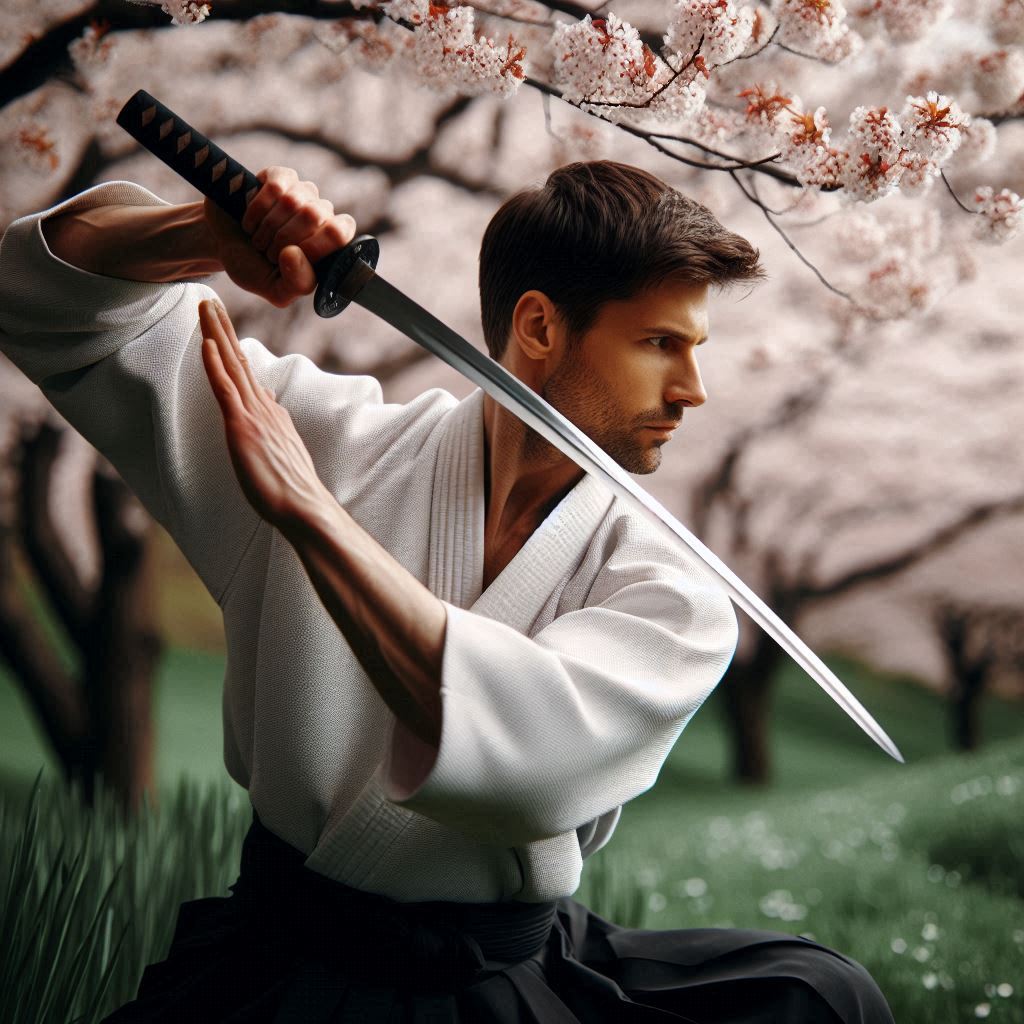
Battojutsu combines technical mastery, speed, and a deep understanding of Japanese history, making it a fascinating discipline for those looking to learn about the art of the sword and samurai culture.
.jpg)
Kenjutsu is a Japanese martial art that represents a rich and deep tradition, centered on the skill of handling the katana, the emblematic Japanese sword. Through this article, we will discover what Kenjutsu consists of, its history, foundations, styles, and its cultural significance in Japanese society.
Origins of Kenjutsu
The term "Kenjutsu" translates as "art of the sword," derived from the Japanese words "Ken" (sword) and "Jutsu" (technique or art). This martial art was institutionalized during Japan's feudal period, serving as preparation for the samurai in real combat.
History
The roots of Kenjutsu date back centuries, particularly to the Heian period (794-1195) when the term began to be used. Over the years, Kenjutsu evolved, integrating philosophies and combat tactics adapted to the needs of the samurai warriors.
Differences with Kendo
It is important not to confuse Kenjutsu with Kendo. Both martial arts are related, but they have different approaches:
- Kenjutsu: Focuses on real combat with metal swords and fighting techniques.
- Kendo: Is a sport that uses bamboo swords (shinai) and is based on competition and the spirit of combat.
Fundamentals of Kenjutsu
Kenjutsu is based on a series of essential techniques and fundamentals that all practitioners must master:
- Cuts and Strikes: Learning precision in cuts and executing effective strikes is fundamental.
- Defenses: The ability to block and evade attacks is crucial for survival in combat.
- Positioning: Distance and positioning are vital to maintain a tactical advantage over the opponent.
Styles of Kenjutsu
There are different styles that reflect various philosophies and techniques. Two of the most well-known are:
- Yagyu Shinkage-ryu: A style that emphasizes mercy towards the enemy.
- Muso Jikiden Eishin-ryu: A style predominant in iaijutsu, focused on the quick draw and cut.
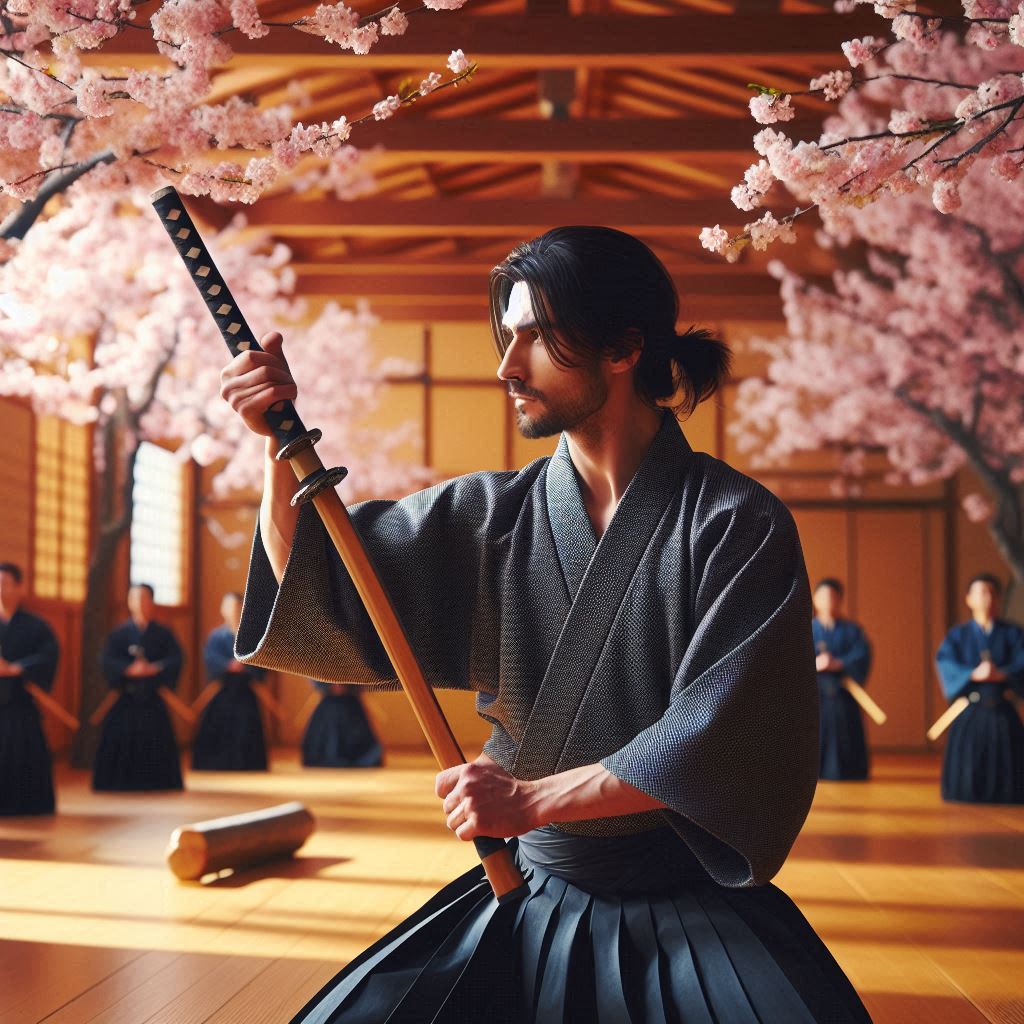
Practice and Training in Kenjutsu
In the practice of Kenjutsu, various training instruments are used:
- Katana: The genuine sword with which the techniques are executed.
- Bokuto/Bokken: Wooden swords, ideal for training to avoid injuries.
- Shinai: Although more common in Kendo, its use in traditional Kenjutsu is limited.
Training generally includes:
- Kata: Sequences of movements that help perfect the techniques.
- Sparring: Controlled combat where learned techniques are applied.
Cultural Importance
Beyond being a mere martial art, Kenjutsu is a symbol of samurai culture and Japanese tradition. The katana not only represents a tool of combat but also a symbol of honor and discipline.
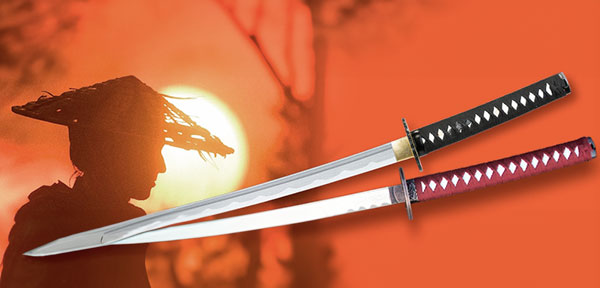
In short, Kenjutsu is an expression of the Japanese warrior spirit, where constant practice and the philosophy of combat intertwine to form an honorable and profound discipline.
A **Full Tang** knife is a type of knife known for its robust and functional design. The key feature of these knives is that the handle is made continuously with the blade, creating a solid and durable piece. This construction provides significant advantages in terms of durability and performance, making them ideal tools for various activities, from cooking to survival situations.
History and Origins
The concept of the Full Tang knife has its roots in antiquity, where the manufacture of cutting tools was essential for human survival. From the first knives made by man, this design has been used in various cultures and eras, adapting to the needs of each specific use.
Characteristics of the Full Tang Knife
- Continuous Design: The handle and blade are integrated, eliminating any possible point of failure between both parts, thereby increasing the knife's strength.
- Strength and Durability: Its construction allows them to withstand pressure and impacts, making them suitable for demanding tasks without the risk of breakage.
- Survival Function: Designed for natural environments, these knives are ideal for cutting, carving, and performing other critical tasks during outdoor activities.
- Quality Materials: Most Full Tang knives are made with high-quality steels, giving them excellent cutting ability and resistance to corrosion.
- Functional Accessories: They often come with appropriate sheaths that allow for safe and practical transport, along with additional safety features, such as locking systems.
Examples of Full Tang Knives
Some notable Full Tang knives include:
- Gerber Prodigy Survival Knife: With a blade of 12.06 cm and ceramic coating, it is ideal for various conditions and features friction locks.
- Defender Xtreme Knife: With a 12-inch blade, it is perfect for camping and survival activities, equipped with a strategic sheath for transport.
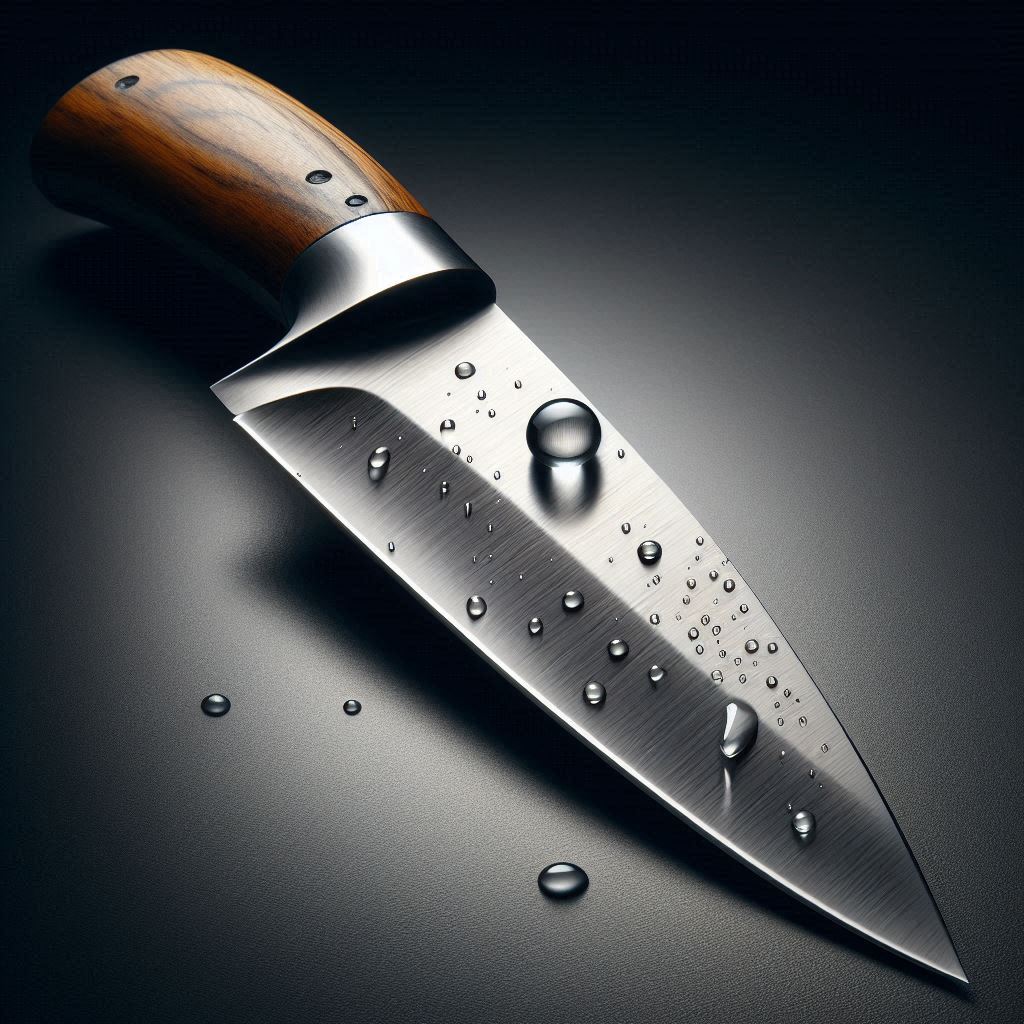
Use and Applications
Full Tang knives are widely used in various practical applications. Their robust design makes them ideal for:
- Hunting and fishing.
- Preparing food in rural settings or on the go.
- Making cuts in survival situations, such as skinning animals or creating shelters.
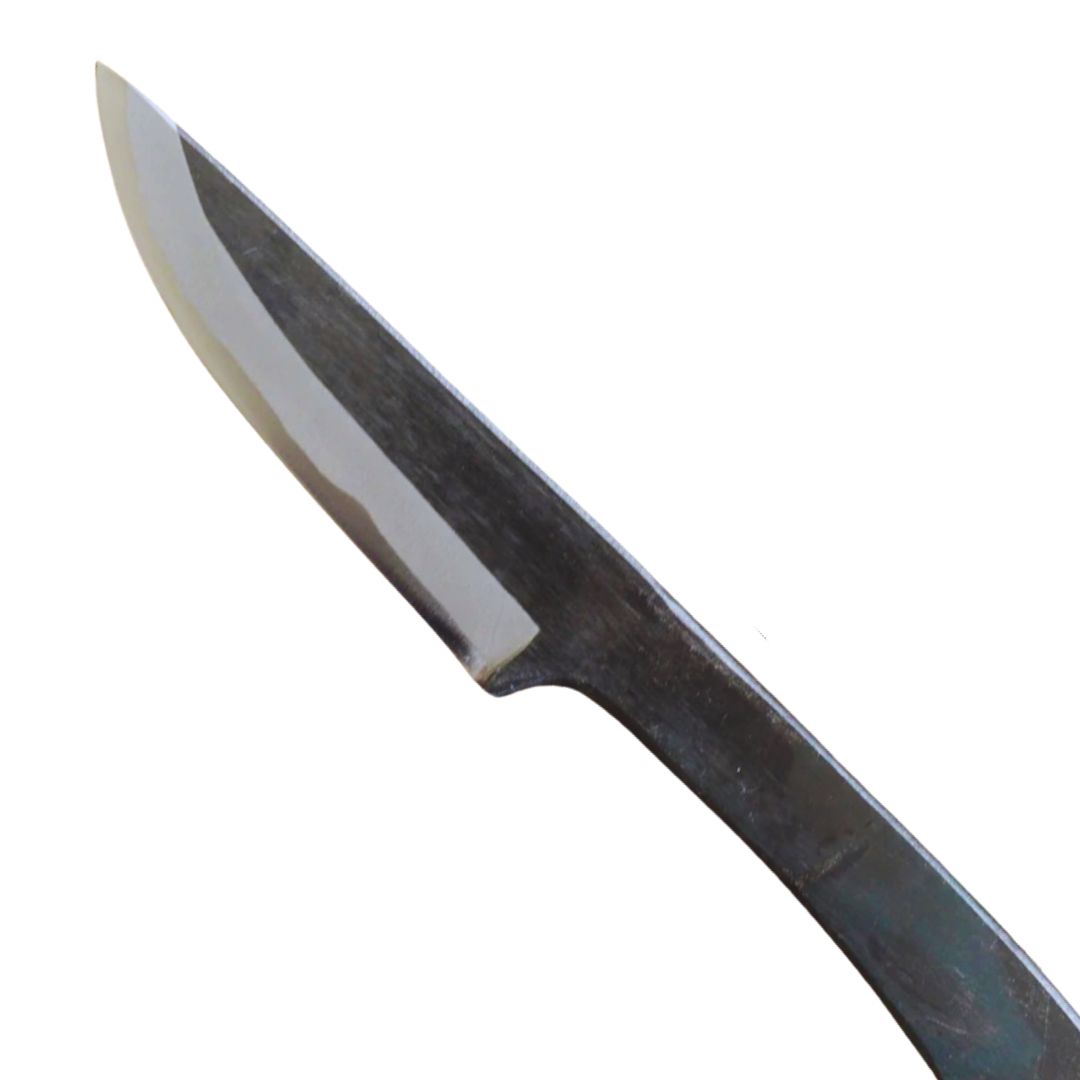
When choosing a Full Tang knife, it is essential to consider factors such as the blade material, cut profile, and the treatment it has received to ensure optimal and lasting performance.
The katana and the medieval sword are two of the most iconic weapons in the history of warfare, each representing the culture and technique of their respective civilizations. In this comparative analysis, we will explore their origins, characteristics, and performance in combat, allowing you to better understand their differences and similarities.
Origin and Fabrication
Katana
Originally from Japan, the katana is a sword characterized by its curved, sharp blade, primarily made of tamahagane, a pure steel derived from iron sand. The katana is not only a weapon but also symbolizes the bushido code, reflecting fundamental values such as honor and loyalty in samurai culture.
Medieval Sword
The medieval sword encompasses various forms and styles used in Europe throughout the Middle Ages, with the longsword being one of the most renowned versions. These swords were made of high-quality steel, with weights ranging from 1.5 kg to 4 kg, depending on the model, which directly affects their maneuverability and effectiveness.
Characteristics and Combat Use
Katana
The katana is noted for its agility, allowing for quick and precise cuts, especially in close-range combat. Its curved design provides a significant advantage in direct attacks, making it the ideal choice for warriors trained in the art of swift combat.
Medieval Sword
On the other hand, the medieval sword, especially the longsword, favors combat techniques requiring greater reach. Its flexible hilt offers additional protection and allows the warrior to use different attack techniques, from deep strikes to defensive maneuvers.
Comparison of Efficacy
Efficiency in Cutting and Piercing
In terms of cutting and piercing efficacy, the medieval sword can surpass the katana under certain circumstances, especially when dealing with armor. However, the katana compensates for this with its speed and effectiveness in hand-to-hand confrontations, a crucial factor in close combat.
Mobility and Precision
The katana is known for its high mobility, benefiting those who prefer a swift fighting style. In contrast, the longsword, although less maneuverable, offers a more robust structural defense, ideal for longer-distance engagements, though its use may be slower in closed situations.
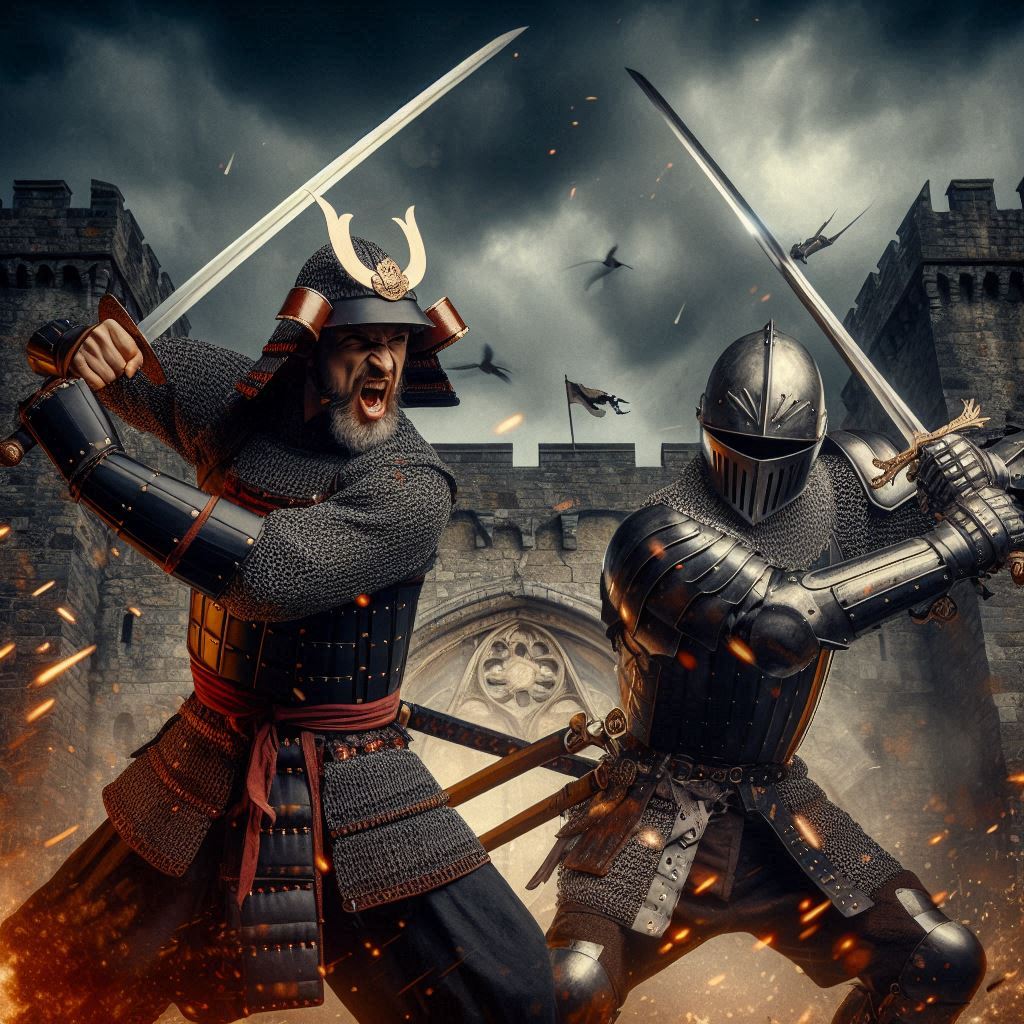
Perfectly adapted to their contexts and combat techniques, both the katana and the medieval sword present unique advantages. Knowing their history and characteristics allows us to appreciate the cultural richness each represents, as well as their role in the evolution of the art of combat.
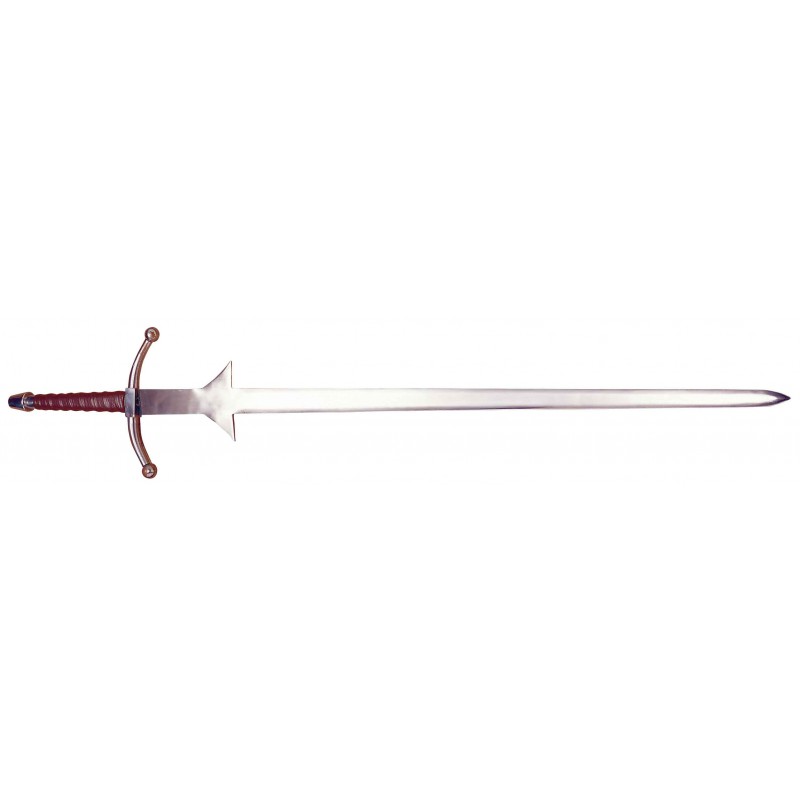
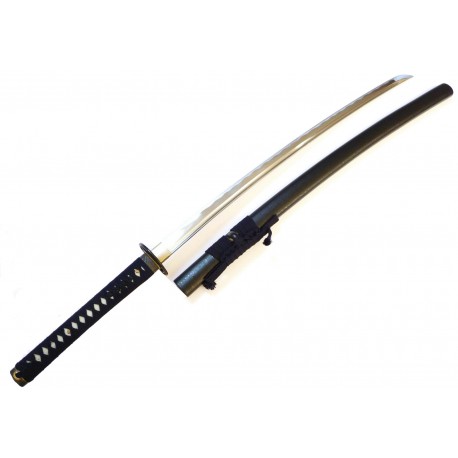
The traditional weapons of the Japanese samurai, such as the katana, wakizashi, and tanto, are iconic artifacts that combine a rich history with impressive functionality. These swords not only represent mastery in forging and combat technique but also symbolize important aspects of Japanese culture and samurai ethics.
Katana
The katana is the most globally recognized sword, known for its curved and elegant shape. Its main features include:
- Length: Generally measures between 60 and 80 cm (24 to 31 inches).
- Effective cutting: Its curved design allows for deep and precise cuts, ideal for confrontations.
- Draw technique: Carried with the blade facing up and can be quickly drawn thanks to a movement called "iai".
The katana is not only a combat weapon but also symbolizes the samurai's soul, reflecting honor and discipline.
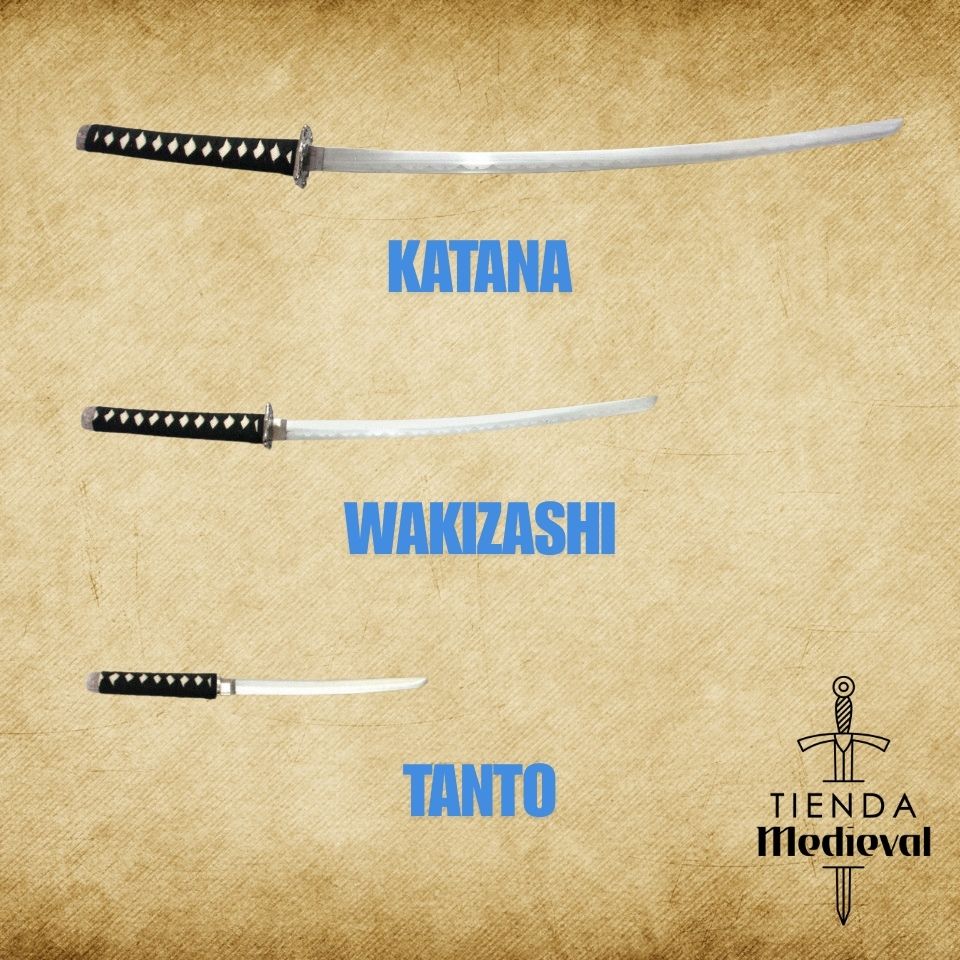
Wakizashi
The wakizashi is a shorter sword, ranging between 30 and 60 cm (12 to 24 inches). Its aspects include:
- Use in pairs: Part of the "daishō" set alongside the katana, symbolizing status and refinement.
- Versatility: Ideal for combat in confined spaces and as a backup in case the katana is unavailable.
- Ceremonial function: Also used in rituals like seppuku, where its size allowed for a more personal and controlled use.
Tanto
The tanto is the smallest of the three, with a length ranging between 15 and 30 cm (6 to 12 inches). Its features include:
- Design: Can have a straight or slightly curved blade, usually single-edged.
- Combat capability: Its compact size is perfect for close-range fights and easy to conceal.
- Use as a tool: Besides being a weapon, the tanto was used in daily life and for personal defense.
Comparisons and Cultural Significance
The katana, wakizashi, and tanto each occupy a specific place in the arsenal of a samurai:
- The katana for open confrontations.
- The wakizashi for combat in limited spaces.
- The tanto for surprise attacks and close defense.
In addition to their practical functions, these weapons also denote deep symbolic values within the samurai tradition, representing soul, loyalty, and bravery.
History and Culture
The evolution of these weapons reflects the rich and complex history of Japan and its samurai culture. Each weapon was not only designed for combat but also incorporated philosophical and spiritual aspects that marked the lives of Japanese warriors through the centuries.
The Daisho is an iconic set of traditional Japanese swords consisting of a katana and a wakizashi. More than just weapons, these swords encapsulate Japan's rich history and culture, representing the essence of Japanese swordsmanship. We will explore their historical, symbolic, and practical relevance, as well as their legacy in contemporary Japanese culture.
History and Origins of the Daisho
The origins of the Daisho date back to the feudal era, being an essential part of the samurai's life. This pair of swords was a distinctive marker of their social status and military skills. The term "Daisho" comes from the words "dai" (large) and "sho" (small), referring to the variations in the lengths of the swords.
Symbolism of the Daisho
The Daisho represents the duality within the samurai spirit:
- Katanas: Considered the soul of the warrior, symbolizing power and strength.
- Wakizashi: Represents honor and loyalty, reflecting more subtle and controlled skills.
The combination of both swords symbolizes the ideal balance between strength and self-control, crucial for any complete warrior.
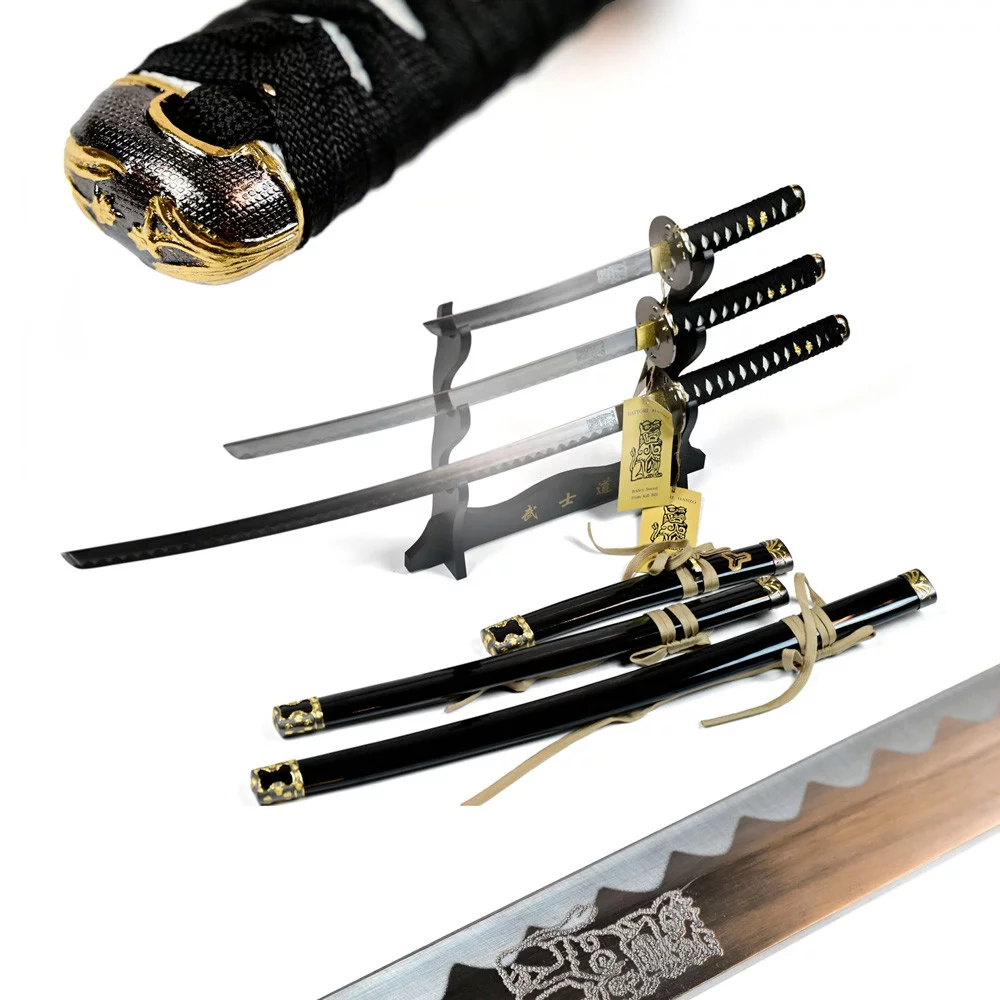
Use of the Daisho in Battle
From a tactical perspective, the Daisho offered versatility on the battlefield:
- Katana: Its long, curved blade was ideal for long-range attacks.
- Wakizashi: Its shorter length made it easier for close combat and quick maneuvers.
Samurais were trained in the skill of using both swords simultaneously, allowing them to adapt to various combat situations.
Ritual and Etiquette of the Daisho
The handling of the Daisho was governed by a strict code of conduct. Samurais had to:
- Show respect and care when wearing and drawing their swords.
- Keep their swords clean and in perfect condition, reflecting their dedication to technical perfection.
Influence on Modern Japanese Culture
The tradition of the Daisho has evolved, but its legacy is still evident today. These swords are now exhibition pieces in museums, and their symbolism of balance and duality continues to resonate in various Japanese martial arts.
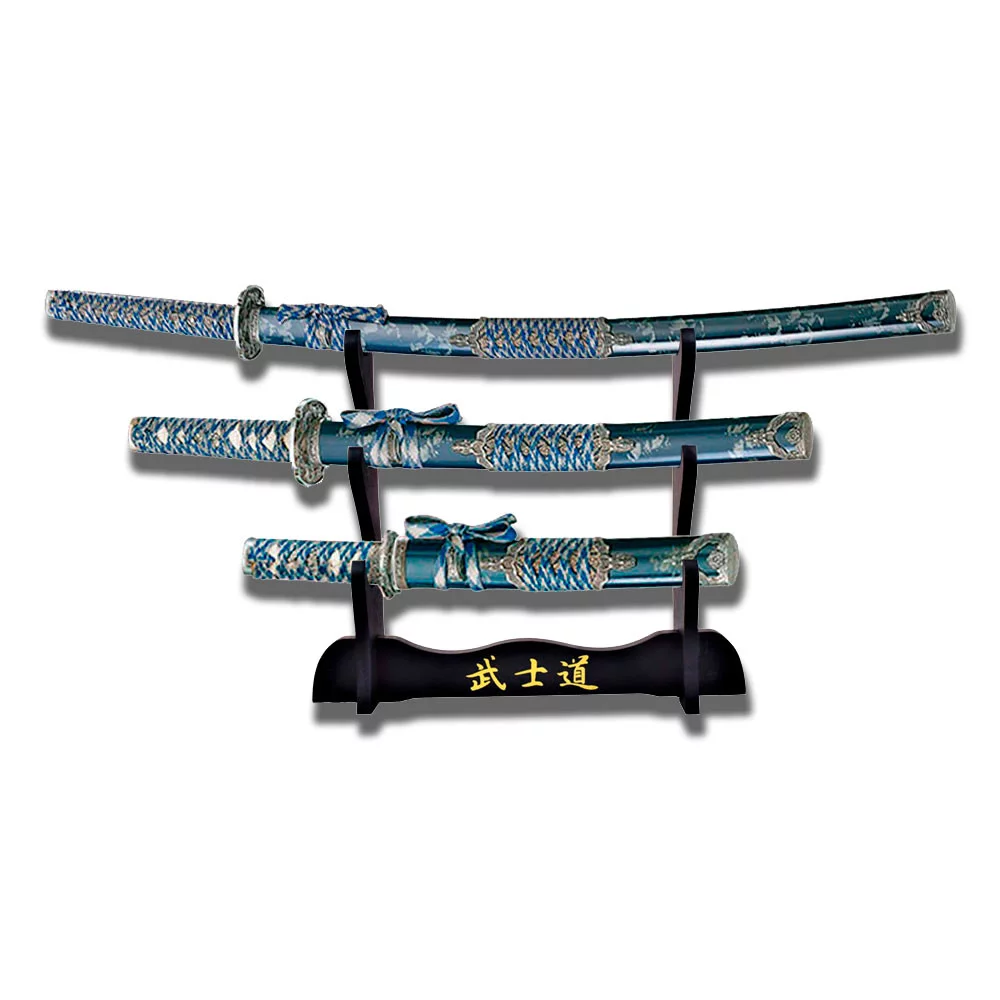
A Lasting Heritage
The Daisho is not only a symbol of the martial prowess of ancient Japanese warriors but also a reflection of Japanese aesthetics and spirit. Its historical significance, along with its application in combat and cultural value, allows us to appreciate the magnitude of this ancient art. It is a tribute to a glorious past and the continuous pursuit of balance between strength and skill.
| Sword | Length | Use |
| Katana | More than 60 cm | Long-range combat |
| Wakizashi | Less than 60 cm | Close combat |
The tachi is a traditional Japanese sword, known for its distinctive design and relevance in Japan's military history. Its curved shape and longer length differentiate it from other swords, such as the katana, and reflect the rich culture and weapon-making techniques of the country throughout the centuries.
Origin and Etymology
The word 'tachi' comes from the Japanese 太刀, meaning 'great sword' or 'long sword'. This name refers to its notable length and curvature, characteristics that distinguish it within the family of Japanese swords.
Characteristics of the Tachi
Design and Fabrication
The tachi is easily recognizable for its curved structure and greater length. Originating before the katana, this sword was made with a mix of soft and hard steel, thereby guaranteeing a balance between flexibility and robustness. The craftsmanship required precise control of temperature and cooling processes to achieve a lightweight and durable blade.
Use and Culture
This type of sword played a crucial role in samurai culture, used both by warriors and court elites. In the Kamakura period, the tachi swords of high-ranking samurais often featured chains on their scabbards, a trait of distinction. These adornments included:
- Hyogo gusari tachi: Swords with decorative scabbards and chains worn as part of formal attire.
- Hirumaki tachi: With spiral, robust, and ornate metal scabbards, without chains.
- Kazari tachi: Ceremonial designs that were masterpieces of Japanese swordsmithing, many of which are considered National Treasures.
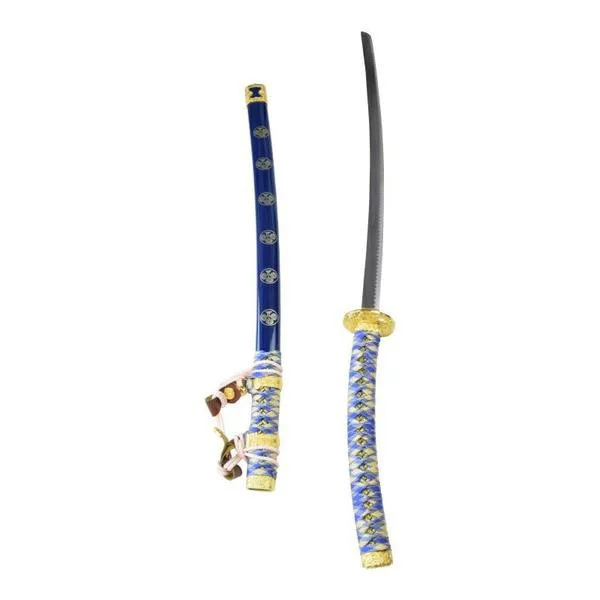
Evolution and Decline
Over time, especially during the Muromachi period, the katana began to replace the tachi as the samurai's preferred sword. However, high-ranking samurai maintained the use of the tachi, which was sometimes modified to be transformed into katanas during the 16th and 17th centuries.
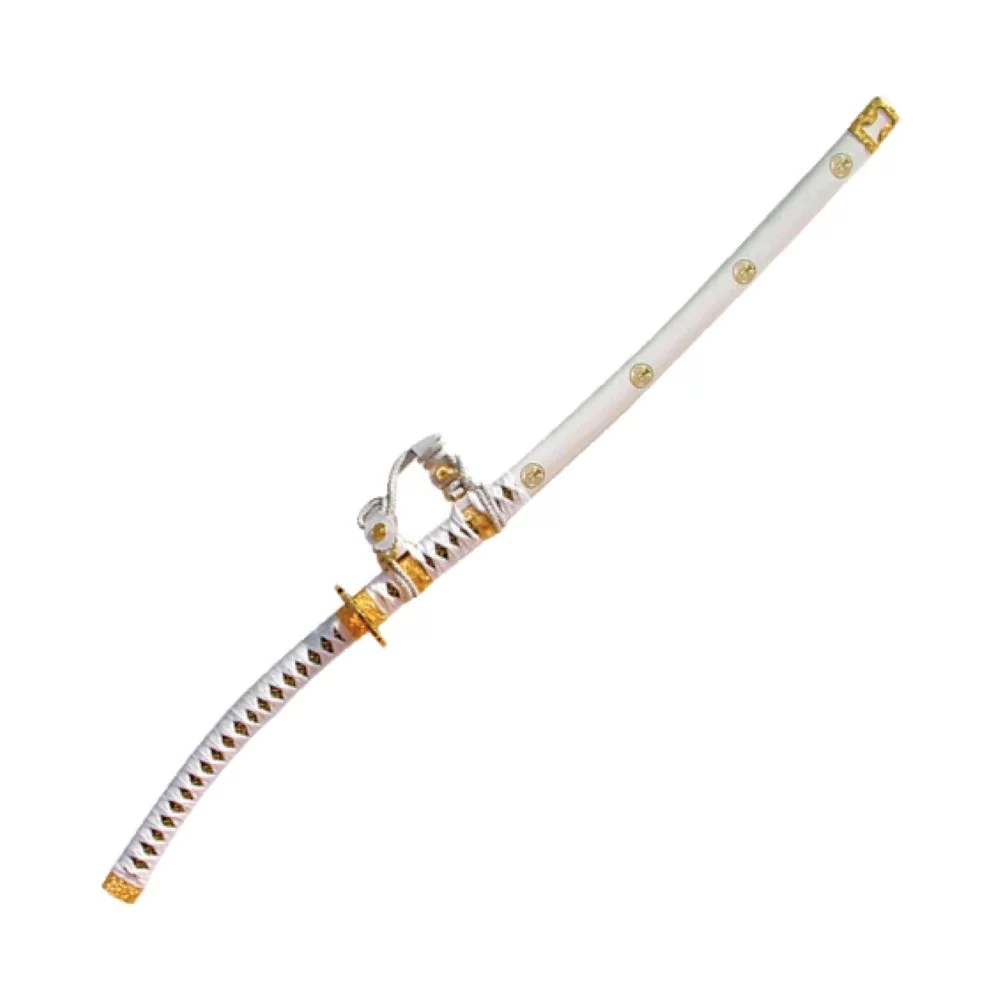
Cultural Legacy
The tachi not only represents a feat of Japanese engineering and culture but also stands as a testament to the art of swordmaking, influencing contemporary designers and collectors. Its rich history continues to inspire interest in Japanese culture and its martial traditions.
| Characteristics | Details |
|---|---|
| Length | Longer than the katana |
| Curvature | Pronounced |
| Material | Combination of soft and hard steel |
| Usage | Samurai culture and court nobles |
| Examples | Hyogo gusari, Hirumaki, Kazari |
The Uchigatana is a traditional Japanese sword that has captured the attention of samurai culture enthusiasts and video game players. This article will help you understand its origin, characteristics, and its use in some popular role-playing games.
Origin and Meaning
The term 'Uchigatana' comes from Japanese, where 'uchi' (打) means 'strike' and 'gatana' (刀) translates to 'sword' or 'katana'. This type of sword is characterized by being carried with the blade facing up, allowing for a quick and efficient draw during combat.
History
Its origin dates back to the Muromachi period (14th-15th centuries), a time when war tactics were evolving. Samurai began using the Uchigatana as a complement to the traditional tachi. With a design that favors speed and ease of use, it became an essential tool in quick battles, providing a crucial advantage to warriors.
Notable Features
- Curved Design: The Uchigatana has a long, slender blade that facilitates agile and precise movements.
- Combat Versatility: It excels in slicing attacks, standing out in techniques that cause blood loss, adding a strategic value during confrontations.
- Usage Requirements: In video games like Elden Ring, a minimum of 11 strength points and 15 dexterity points are required to wield it effectively.
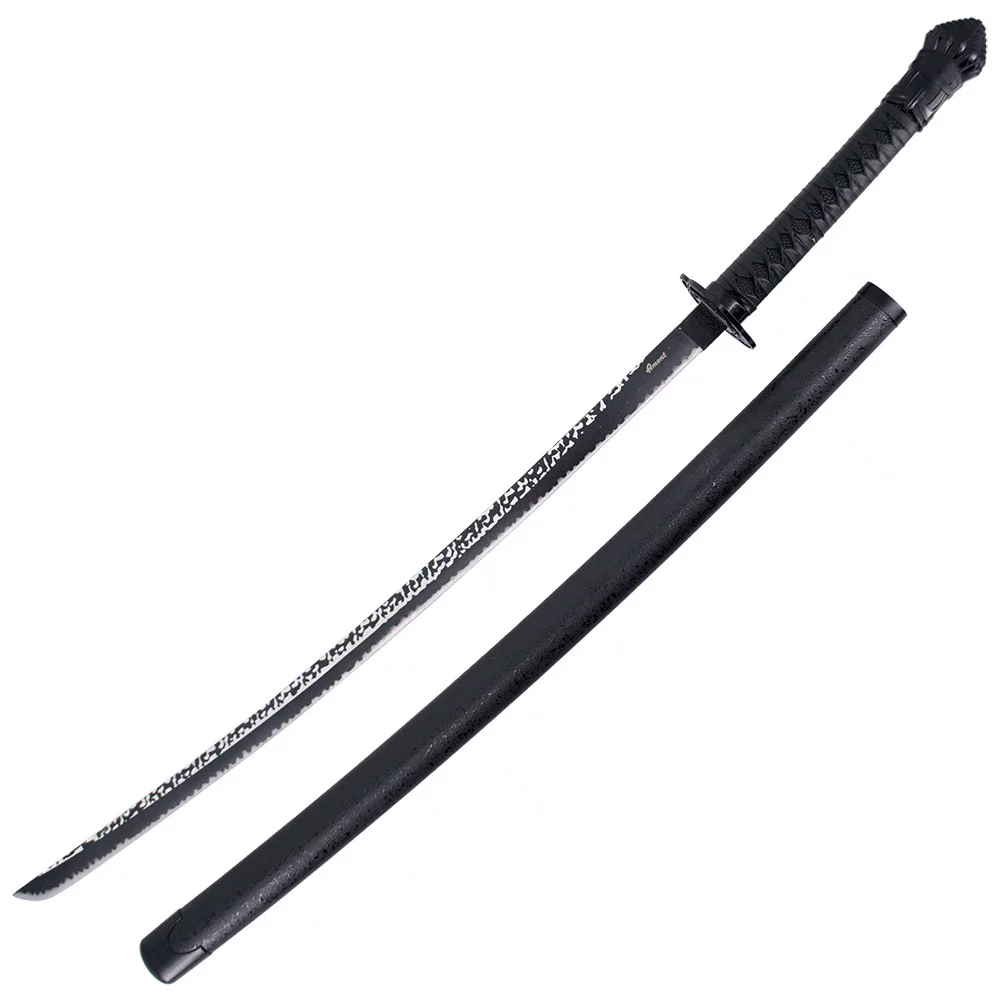
Use in Video Games
The Uchigatana has found a special place in role-playing games, especially in titles like Elden Ring and Dark Souls. In Elden Ring, for example, it can be located in the Deathtouched Catacombs, and once found, it offers the special ability 'Sheathe', allowing for a quick and devastating attack.
This sword can also be enhanced through Ashes of War, providing different strategic approaches in combat and further extending its versatility.
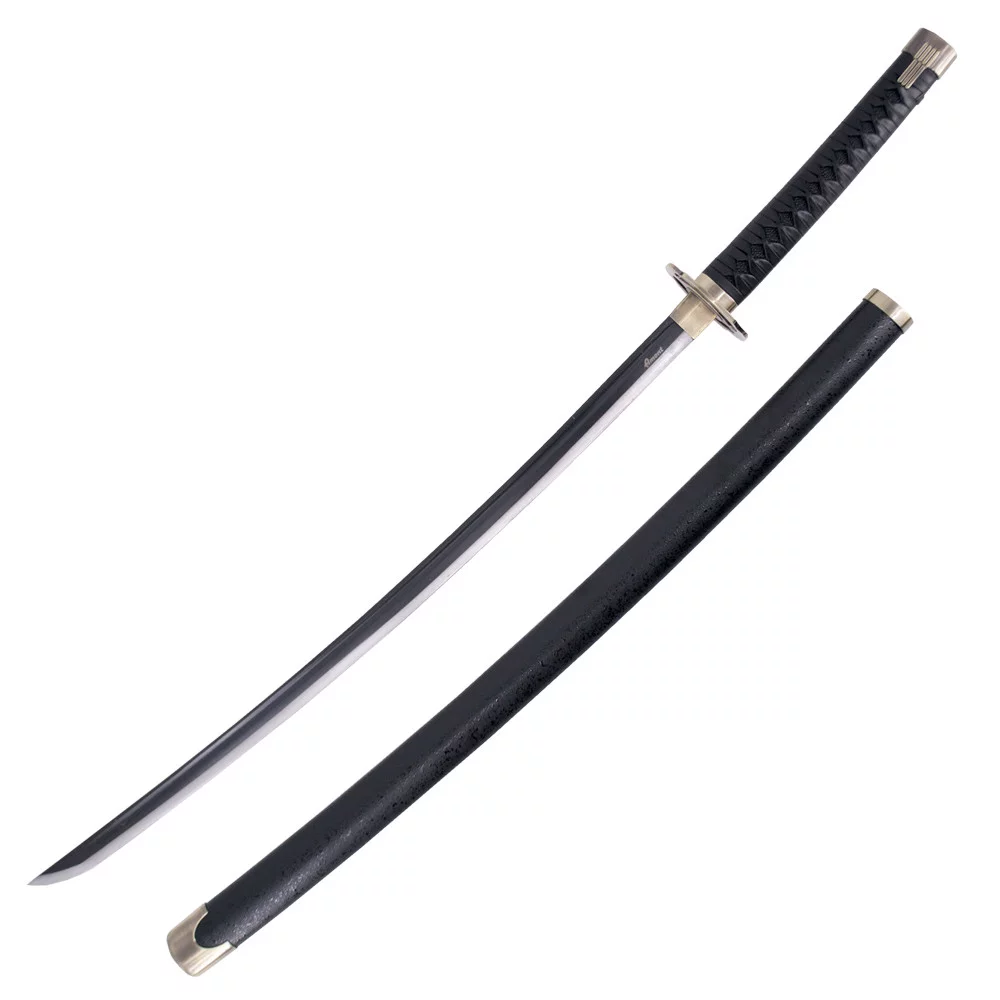
| Feature | Description |
| Period of Origin | 14th-15th centuries (Muromachi Period) |
| Main Use | Quick and agile combat |
| Video Game Ability | Sheathe for quick attacks |
The Nihonto is the Japanese term used to describe swords traditionally forged in Japan. This concept encompasses a diversity of swords, each with distinctive characteristics and specific functions in Japanese history. The following discusses its rich history, manufacturing process, and defining elements in Japanese culture.
History of Nihonto
The history of Nihonto dates back to the Yayoi period, spanning from 1,000 BC to 300 AD, when bronze swords began to be made in Japan. The term "Nihonto," however, primarily refers to the curved swords produced from the Heian period, which goes from 794 to 1185, to the present day.
Evolution and Manufacturing Periods
Japanese swords have evolved significantly over the centuries:
- Chokutō: Straight and short swords, influenced by Chinese imports before the 10th century.
- Jōkotō: Ancient swords produced until around 900 AD.
- Kotō: Swords made between 900 and 1596 AD.
- Shintō: New swords from 1596 to 1780 AD.
- Shinshintō: New swords from 1781 to 1876 AD.
- Gendaitō: Modern swords from 1876 to the present.
During the Kamakura period (1185–1333), the so-called "golden age" of sword making was experienced. This was a time when master swordsmiths left signatures on the blades, providing important data for studies on Nihonto.
Distinctive Characteristics
Each Nihonto has unique characteristics, which include:
- Hamon: The temper line, visually distinguishing the hardness of the sharp edge.
- Hada: The surface texture of the blade, which varies according to the manufacturing school.
- Tsuba: The handguard, which is not only functional but can be decorated with various designs.
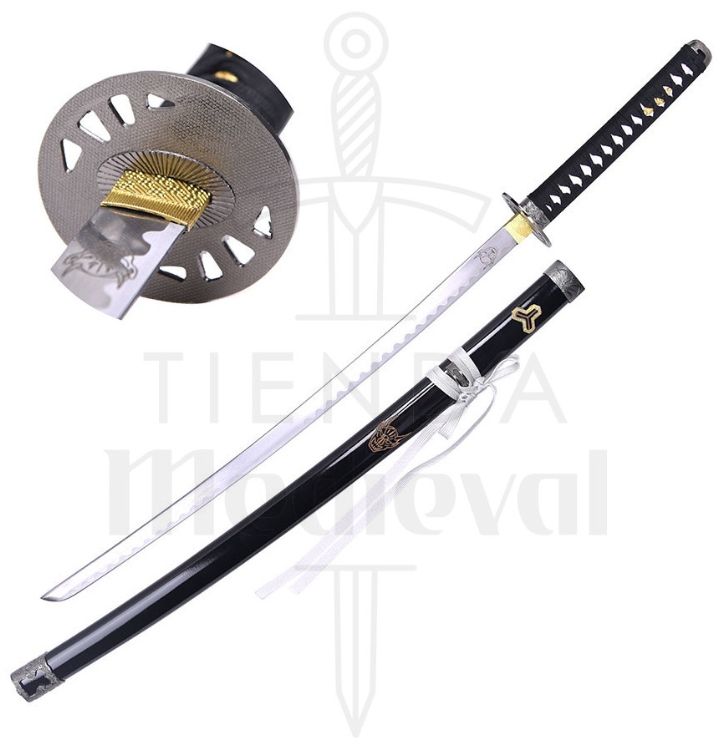
Types of Japanese Swords
There are various categories of Japanese swords, each adapted to different combat techniques:
- Uchigatana: Curved long-bladed sword, worn at the waist with the blade upward.
- Tachi: Similar to the Uchigatana, but worn with the blade downward.
- Katana: Refined and elongated sword, also worn with the blade upward.
- Wakizashi: Shorter sword, used in conjunction with the katana.
- Tantō: Short sword, resembling a knife.
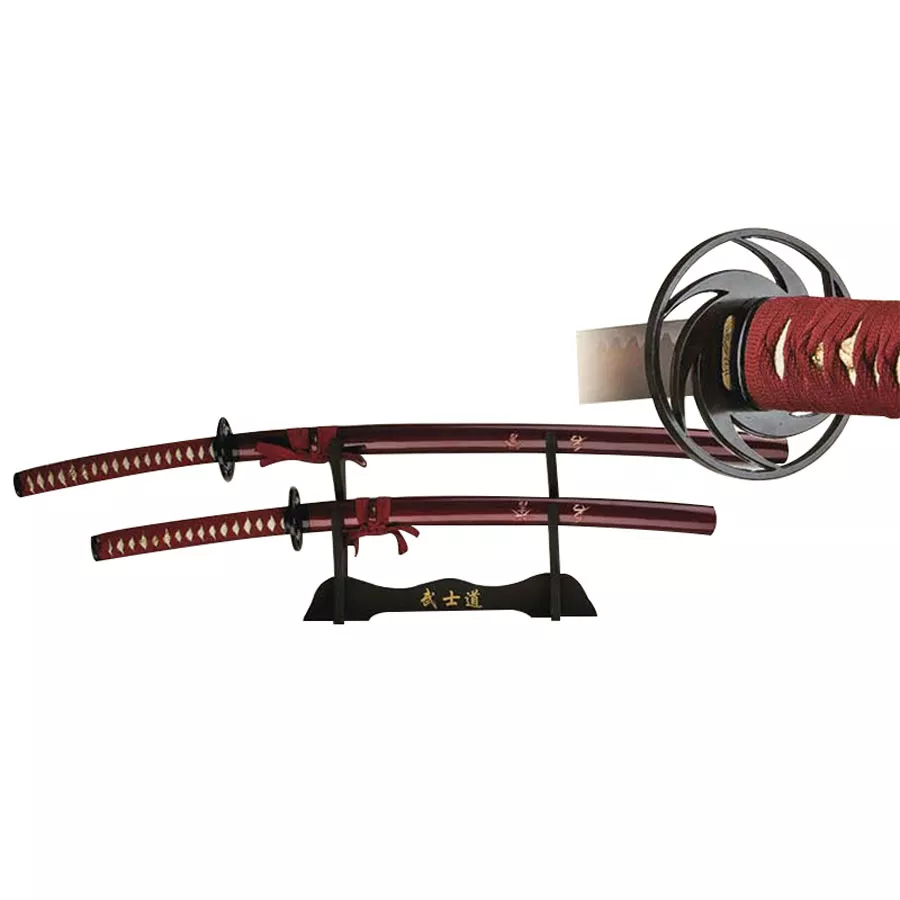
Cultural Significance
Japanese swords possess deep cultural significance, being a symbol of honor and loyalty during the samurai era. The use of the katana and wakizashi is emblematic within the warrior traditions, reflecting not only combat skill but also the code of conduct of bushido.
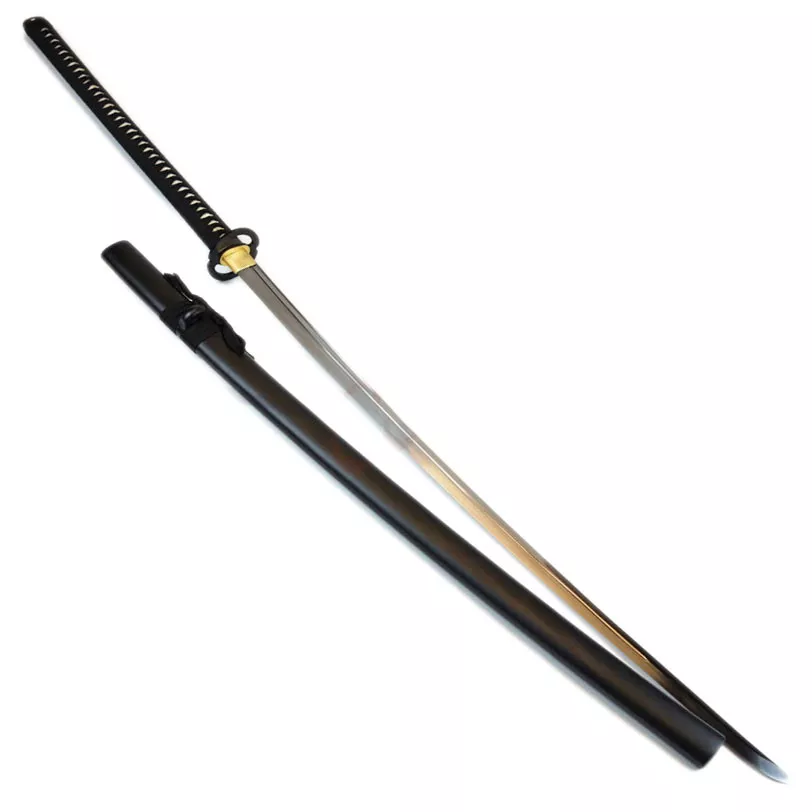
Steel is a fundamental material in the industry, widely used for its versatility and durability. Among the most prominent varieties, we find stainless steel and carbon steel. Each type has unique characteristics that make them suitable for specific applications. Below, we will analyze the main differences between these two types of steel so you can choose the most suitable one for your project.
Characteristics of Stainless Steel
The stainless steel stands out for its high resistance to corrosion, thanks to the inclusion of chromium in its chemical composition. This alloy, which also contains iron, carbon, and sometimes nickel, creates a protective layer of chromium oxide, allowing it to excel in humid environments or those exposed to extreme temperatures. Its properties make it a preferred choice for applications where aesthetics and durability are essential.

Characteristics of Carbon Steel
The carbon steel, on the other hand, is an alloy composed mainly of iron and carbon, sometimes including other elements like silicon and manganese. Its hardness and flexibility are notable; however, its high porosity makes it more vulnerable to corrosion and oxidation in humid conditions. This type of steel is commonly used in applications where an aesthetic finish is not required.
Key Differences
- Corrosion Resistance:
- Stainless Steel: High resistance, almost maintenance-free.
- Carbon Steel: Needs protective coatings in humid environments.
- Appearance:
- Stainless Steel: Bright and attractive finish.
- Carbon Steel: Matte and less flashy finish.
- Applications:
- Stainless Steel: Excellent for kitchen utensils, construction, and medical equipment.
- Carbon Steel: Ideal for internal structures and non-visible elements.
- Cost:
- Stainless Steel: More expensive due to its composition.
- Carbon Steel: More economical and accessible.
Advantages and Disadvantages
Stainless Steel
- Advantages:
- High resistance to corrosion.
- Attractive aesthetics.
- Durability in adverse conditions.
- Disadvantages:
- High cost.
- Difficulty in machining.
Carbon Steel
- Advantages:
- Greater flexibility and elasticity.
- Affordable for large-scale projects.
- Ease of machining.
- Disadvantages:
- Greater susceptibility to corrosion.
- Less aesthetic, ideal for structural use.
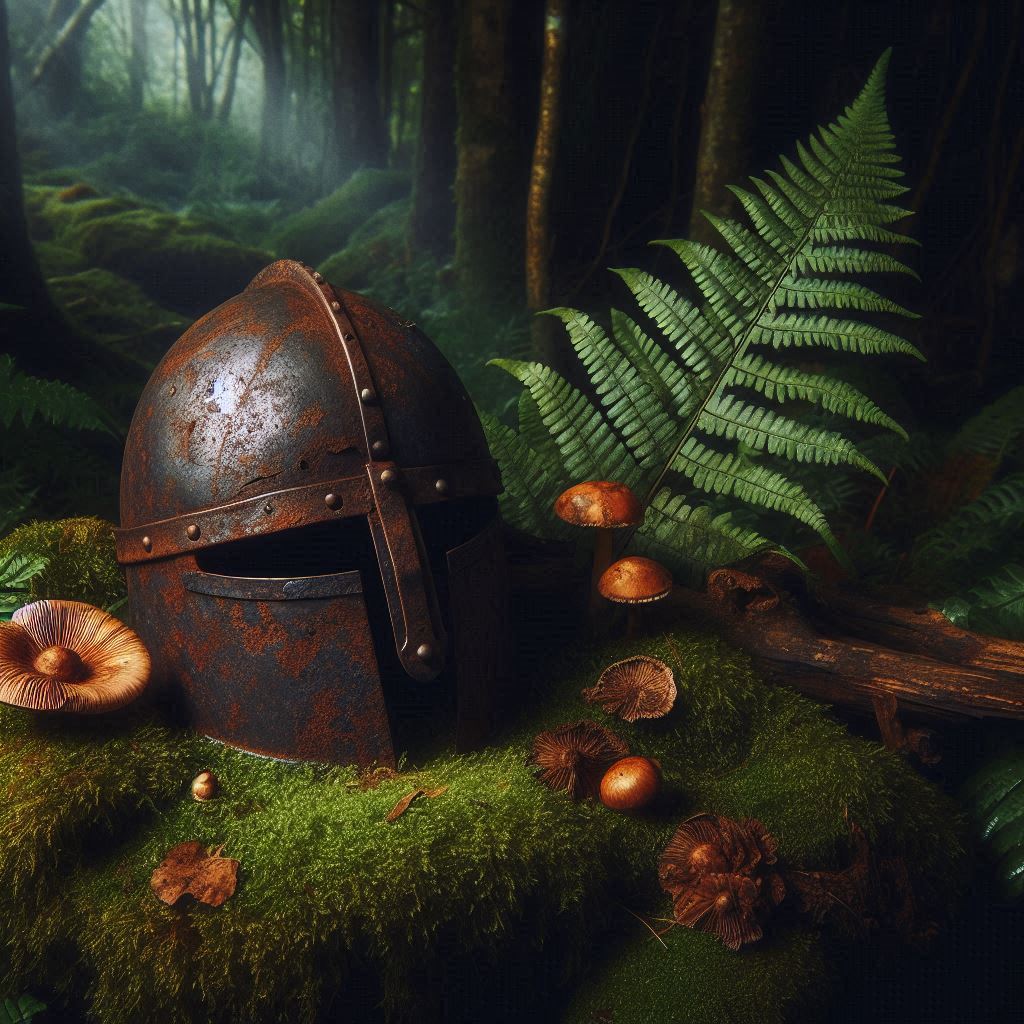
| Characteristics | Stainless Steel | Carbon Steel |
|---|---|---|
| Corrosion Resistance | High | Low |
| Appearance | Lustrous | Matte |
| Cost | High | Low |
| Applications | Tools, automobiles, construction | Structures, internal machinery |
Ninjutsu has captured the imagination of many people around the world, thanks to its mystic combination of unique skills and rich history. Often associated with ninjas, ninjutsu is much more than just a simple set of tactical movements; it is a martial art that encompasses both combat and espionage, emerging as a fundamental discipline in the historical military strategy of Japan.
Origins of Ninjutsu
The roots of ninjutsu are uncertain, but there are several theories about its emergence. Some versions maintain that the techniques of ninjutsu were brought to Japan from China, where their practices were deeply rooted in religious beliefs, life philosophies, and meditation methods. What is indisputable is that, in Japan, ninjas emerged as key figures, leveraging their skills to carry out infiltrations and surprise attacks from the shadows.
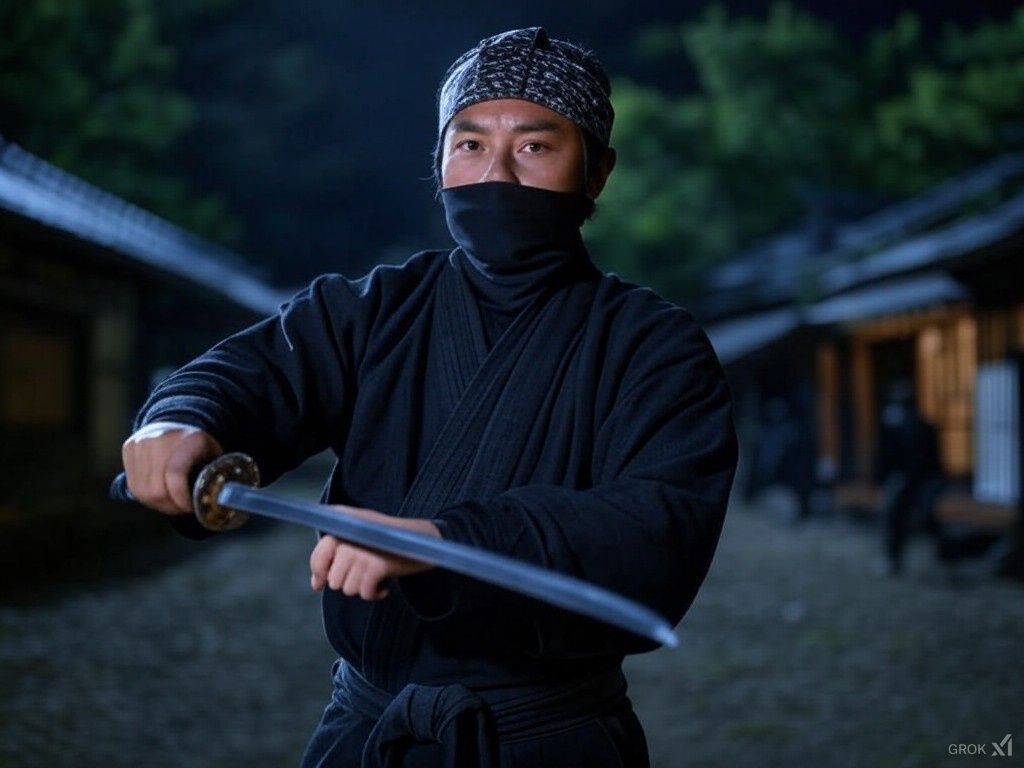
Characteristics of Ninjutsu
Ninjutsu is known for a repertoire of skills, including:
- Striking Techniques: Handling various weapons such as sticks, spears, and darts.
- Use of Explosives and Poisons: Incorporation of lethal and unconventional weapons into the practitioner's arsenal.
- Knowledge of Meteorology and Geography: Ability to read the terrain and predict weather conditions that could affect a mission.
- Espionage Strategies: Advanced methods for infiltrating and obtaining crucial information.
- Camouflage Methods: Techniques for remaining hidden and undetected.
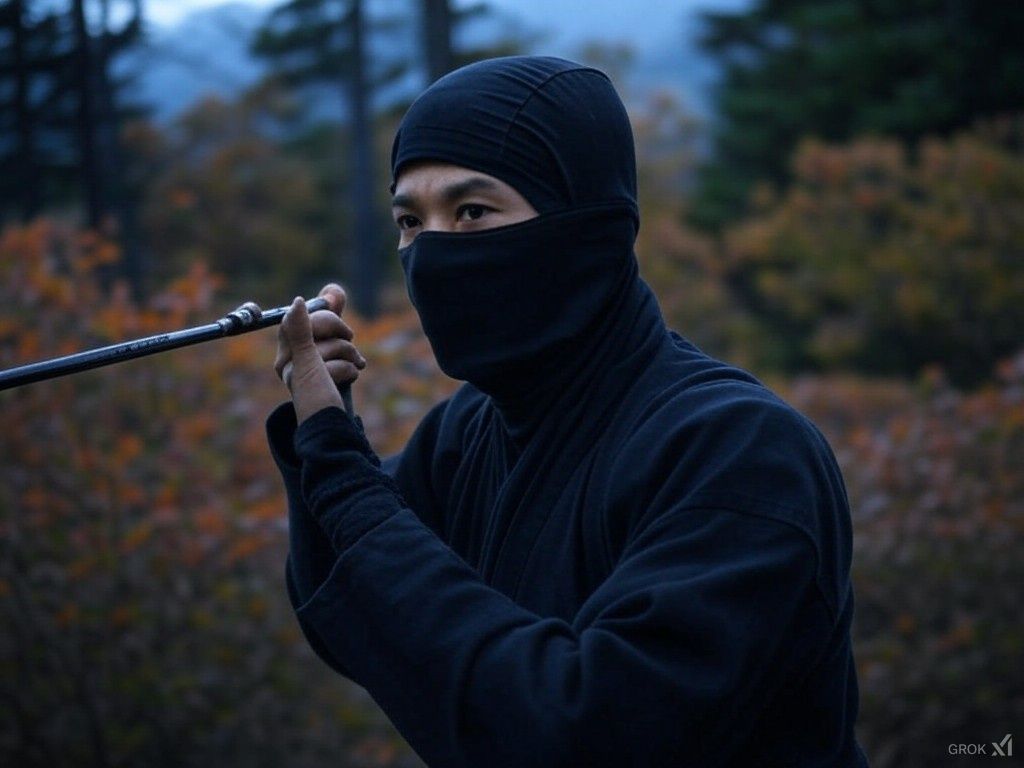
History of Ninjutsu
During the Middle Ages, ninjas specialized in what we might call unconventional warfare, while samurai adhered to a code of honor known as bushido. Ninjas, free from these restrictions, used any means necessary to secure victory. However, after the Meiji Restoration, the role of ninjas diminished in favor of the samurai, who became guardians of the tradition and culture of Japan at that time.
Nevertheless, ninjutsu remained hidden, practiced in secret for years. It was only in the last decades of the 20th century, with the help of organizations like Bujinkan, founded by Masaaki Hatsumi, that ninjutsu emerged into the public eye as a large-scale martial discipline.
Ninjutsu Schools
Today, schools like Bujinkan continue to teach ninjutsu, combining it with techniques from other traditional Japanese martial arts such as judo and kendo. These institutions focus on personal development through self-protection and self-mastery, honoring the ancestral techniques that made ninjutsu a unique martial art.
Popular Perception
Despite the rigorous knowledge passed down through generations, ninjutsu has been widely popularized in the West thanks to Hollywood movies, in which ninjas are often portrayed as mysterious and skilled warriors. However, this often romanticized representation does not capture the depth of ninjutsu as a serious and complex martial art.
Ninjutsu, therefore, remains an integral part of Japanese martial culture, globally recognized for its focus on survival techniques and mastery over adversity. Its history, while intricate, remains alive and is valued both by experienced practitioners and by enthusiasts who wish to learn about this traditional martial art.
```The iaitō are swords specifically designed for the practice of iaidō, a Japanese martial art that focuses on the technique of drawing and sheathing the sword. Unlike katanas, iaitō are not sharp, making them safe for training and practice. This fundamental difference not only ensures the safety of the practitioner but also exempts them from legal restrictions affecting sharp swords in Japan.
Origins and History of Iaidō
Iaidō, whose origins date back about 500 years, is a well-established tradition in Japanese culture. It is said to have originated with Iizasa Choisai, the founder of the Tenshin Shōden Katori Shintō-ryū style. This style included the use of the katana and other weapons and laid the foundation for the techniques known as iai, characterized by rapid drawing and immediate attack.
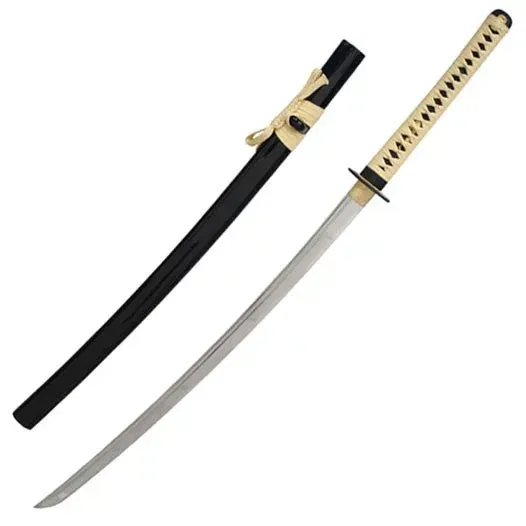
Characteristics of Iaitō
The iaitō resembles a katana not only in appearance but also in feel and dimensions. The blades measure between 60 and 80 centimeters (approximately 23.62 to 31.6 inches) and are typically made from a metal alloy that reduces their weight, ranging from 820 to 950 grams. This weight, although somewhat less, is quite close to that of a traditional katana, facilitating practice under similar conditions but without the danger of a sharp weapon.
Differences Between Iaitō and Katana
The main distinction between an iaitō and a katana is the edge. Iaitō are intentionally designed not to be sharp, a key feature since the Jutoho Law of 1958 banned the production and possession of sharp swords. This is crucial because it still allows for the safe practice of this martial art while complying with legal regulations.
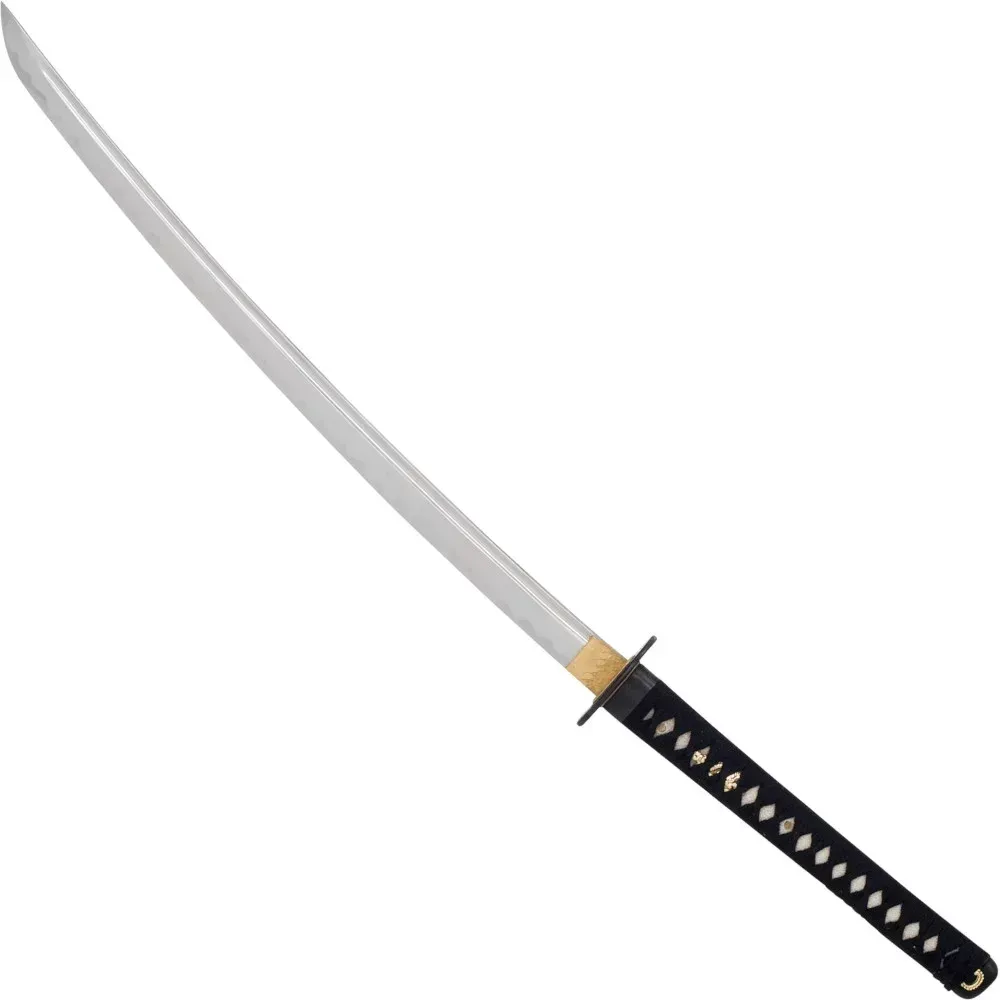
Manufacturing and Origin of Iaitō
The production of iaitō began around the 1960s, driven by the new laws and regulations post-World War II. Although it is not a traditionally ancient art, iaitō found its home in the Gifu region, well known for its historic forging schools, such as those in Mino. The collaboration between experts from various sword production fields allowed these traditions to survive the disuse of the sword following the Meiji era.
Use in Iaidō
Iaidō is much more than a simple physical exercise; it is a discipline that cultivates concentration and mental presence. Practitioners, or iaidokas, learn to maintain a keen awareness of their surroundings, essential for knowing when and how to draw the sword. The practice also encompasses controlled cutting techniques, as well as the symbolic process of shaking off the "blood" and re-sheathing the blade. The iaitō is essential in this learning, providing practitioners with the opportunity to train safely.
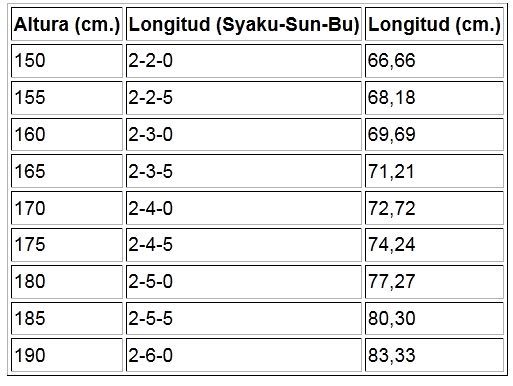
The iaitō is an indispensable tool for iaidō, crafted with the necessary care to reflect the essence and qualities of a katana, but without the risk of injury associated with a sharp edge. The evolution of its design and manufacturing reflects adaptability, allowing the rich tradition of iaidō to continue being practiced in a contemporary and safe manner.
The center of gravity (CG) of a bladed weapon is a crucial concept for understanding its handling and efficient use in combat. This term refers to the point at which the weights of the weapon are balanced, directly influencing its balance, stability, and, therefore, its performance when used or thrown.
Importance of the Center of Gravity in Bladed Weapons
The balance of a bladed weapon, generated by its center of gravity, determines how it will behave when handled or thrown. A proper balance not only facilitates maneuverability but also confers precision and stability. Understanding this concept allows users, whether warriors or craftsmen, to optimize the design and use of weapons to maximize their effectiveness.
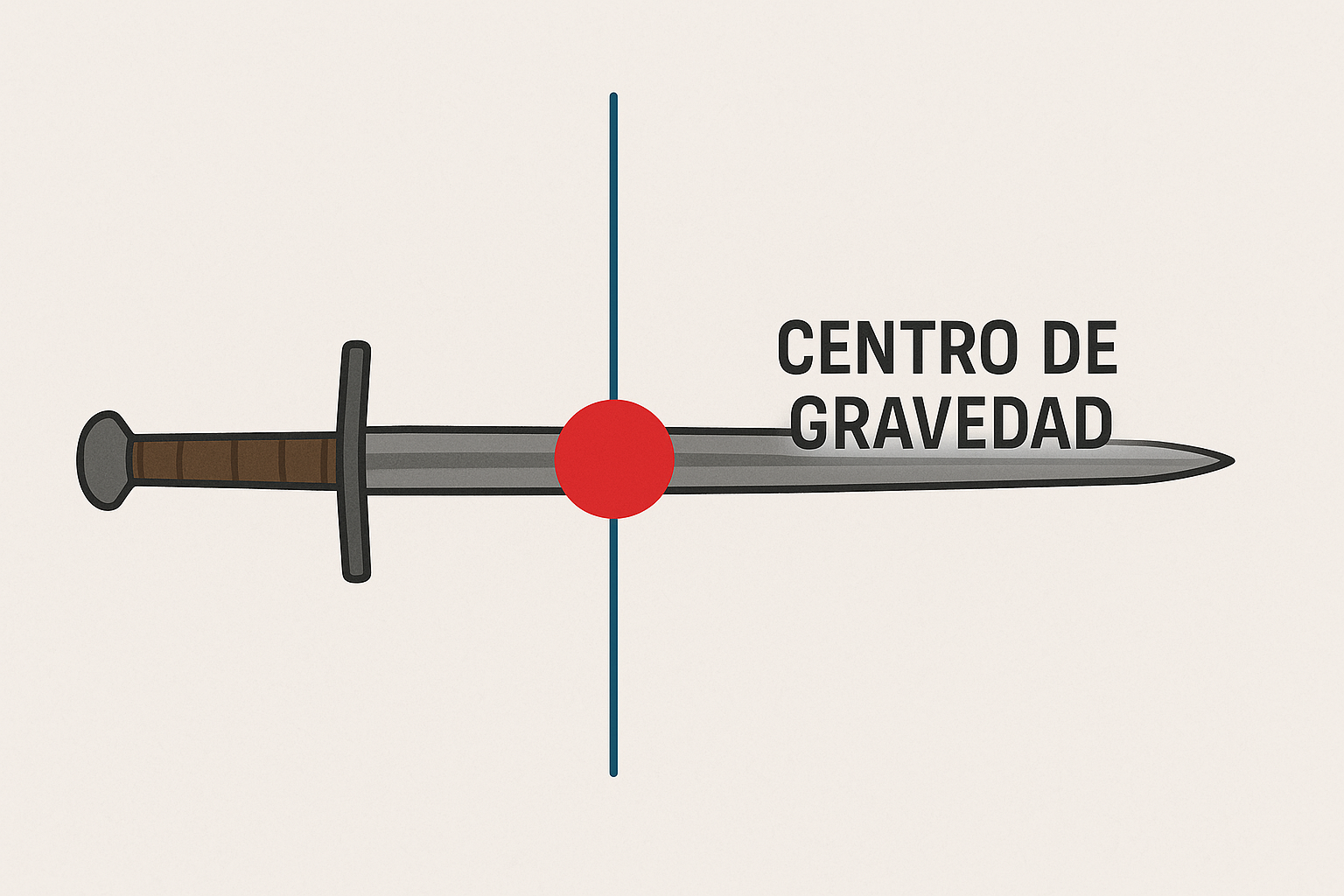
Center of Mass and Balance of Swords and Knives
The center of mass (CM) directly influences the balance of weapons such as swords and knives. The CM, located near the handle, makes the weapon easier to manipulate for striking. If the CM is close to the blade, the balance varies, making it more effective for cuts and slashes, but potentially hindering other types of strikes.
The Challenge of a Poorly Balanced Sword
Manipulating a sword with poor balance can result in ineffective use. The uncertain behavior when striking and the greater physical demand on the user can lead to quick exhaustion and inaccurate blows, endangering both the user and their attempts to execute precise strikes.
Comparison of Swords According to Center of Gravity
- Centered towards the blade: Ideal for cuts and slashes, as its balance allows for quick and precise movements.
- Centered towards the handle: Offers better control in sword strikes, allowing for greater precision and handling.
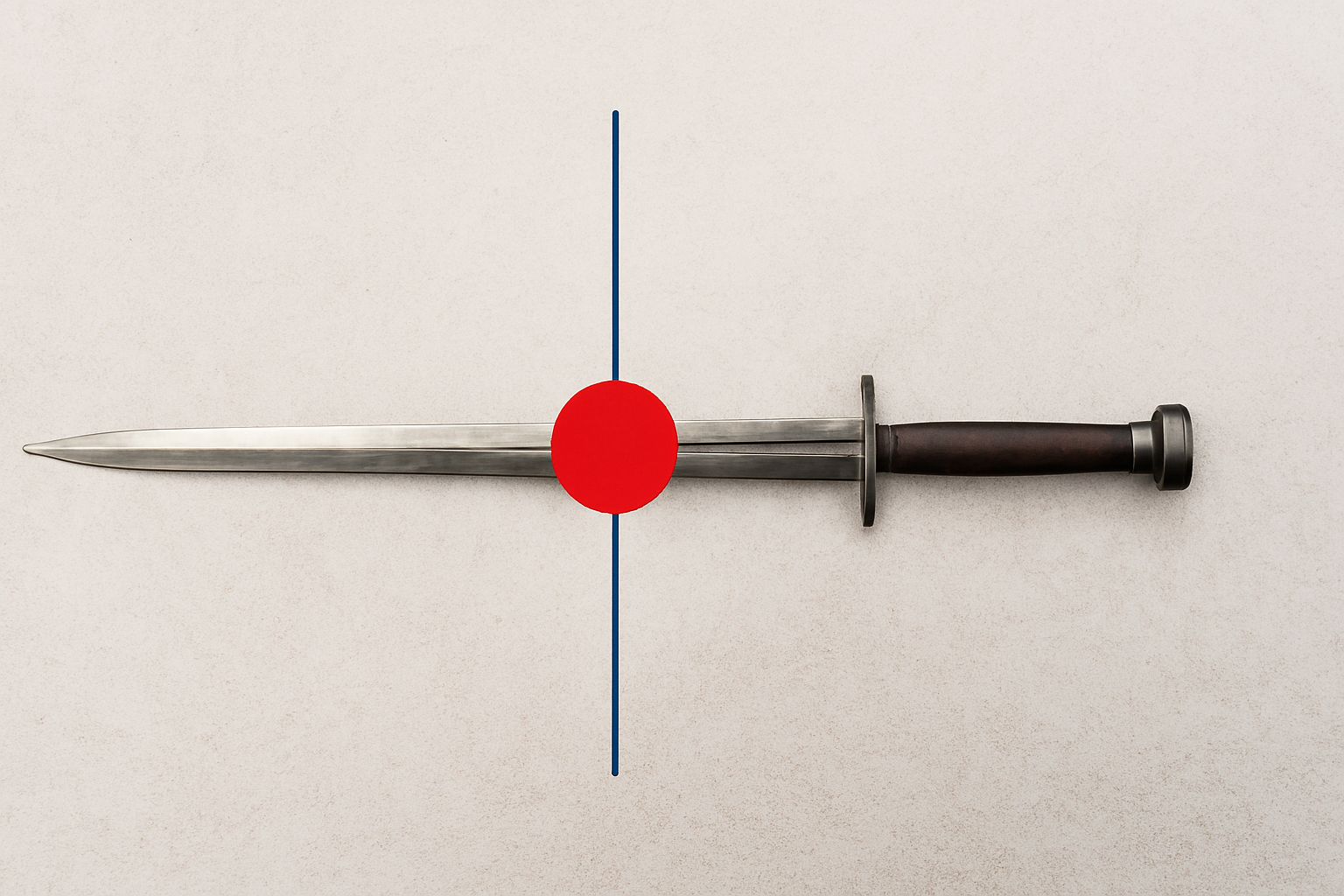
Influence of Centering on Knife Throwing
Throwing a knife requires a well-distributed CG to ensure stable and accurate flight. A CG close to the center of the knife is ideal, as it allows for a straight and controlled throw. If the CG is improperly distributed, the knife may deviate during flight, negatively affecting accuracy.
Adjustability of the Center of Gravity in Handmade Weapons
Handmade bladed weapons allow customization of the CG. By selecting materials and adjusting the weight distribution, craftsmen can design bespoke weapons that meet the specific needs of the user, optimizing the balance and control of the weapon for specific combat situations.
Bladed Weapons and the Need for a Well-Defined Center of Gravity
- Throwing knives: A centered CG improves flight accuracy, crucial for hitting the target.
- Swords and Sabres: A well-placed CG maximizes effectiveness in cuts, ensuring effective strikes.
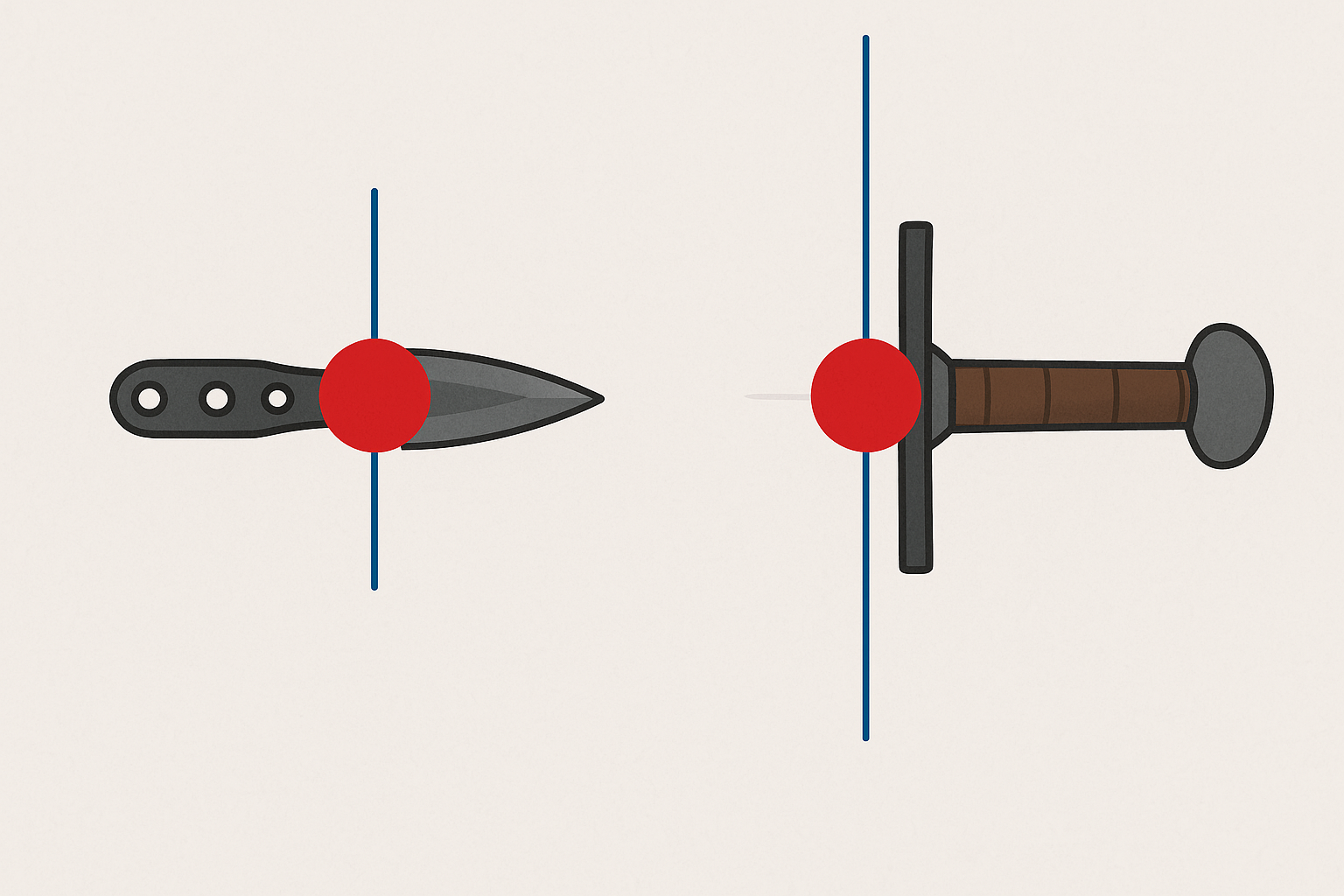
Understanding the CG in bladed weapons is essential not only for manufacturers and craftsmen but also for users, as a deep knowledge enables them to make the most of the weapon’s capabilities in combat. Customized adjustments are an added advantage of handmade weapons.
The tamahagane steel is widely recognized as one of the most iconic and valuable materials in the making of Japanese swords. This type of steel, whose Japanese name literally means "precious steel," stands out for the millennia-old tradition backing its production and the unique properties it offers to the weapons and tools forged from it.
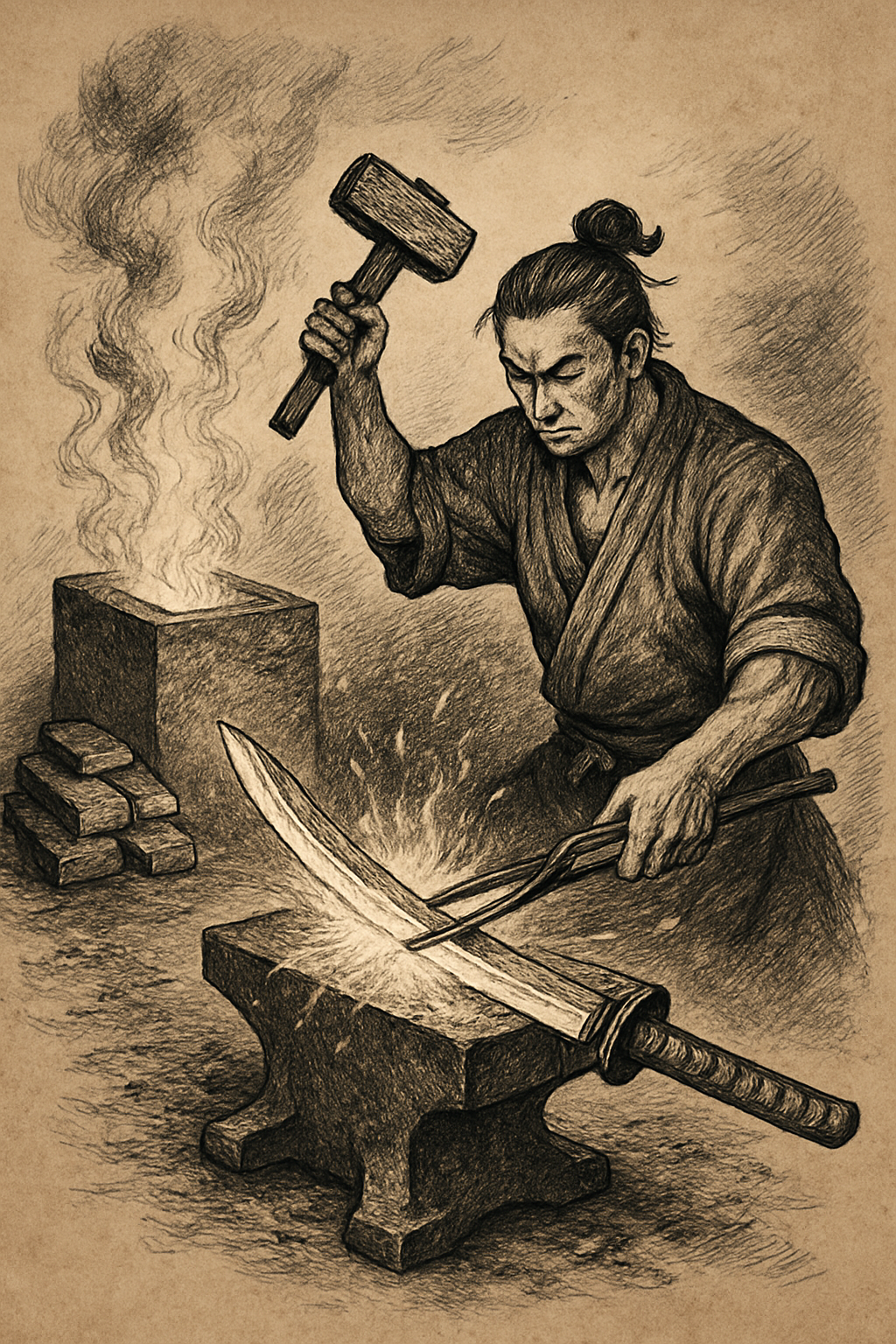
Origin and Composition of Tamahagane Steel
Tamahagane is primarily a carbon steel, characterized by its careful composition. It generally contains about 1% carbon; however, the content can vary between 0.5% and 1.5%. Historically, some specimens reached a carbon content between 3% and 4.5%, making them more brittle.
Traditional Manufacturing Process: Tatara Method
The production of tamahagane is a meticulous and artisanal process known as "tatara." This method has been practiced for centuries in Japan using very specific procedures:
- Selection of Raw Materials: Iron sand, specifically satetsu, mainly from Shimane, is used. Two types are distinguished: akame satetsu (lower quality) and masa satetsu (higher quality).
- Tatara Furnace: The iron sand is placed in a traditional clay furnace at high temperatures, around 1,000°C. It is combined with charcoal, and after hours of heating, the melted metal is obtained.
- Extraction and Selection: When the furnace is broken, metallic blocks are obtained, where the higher-quality steel is identified by its bright silvery color.
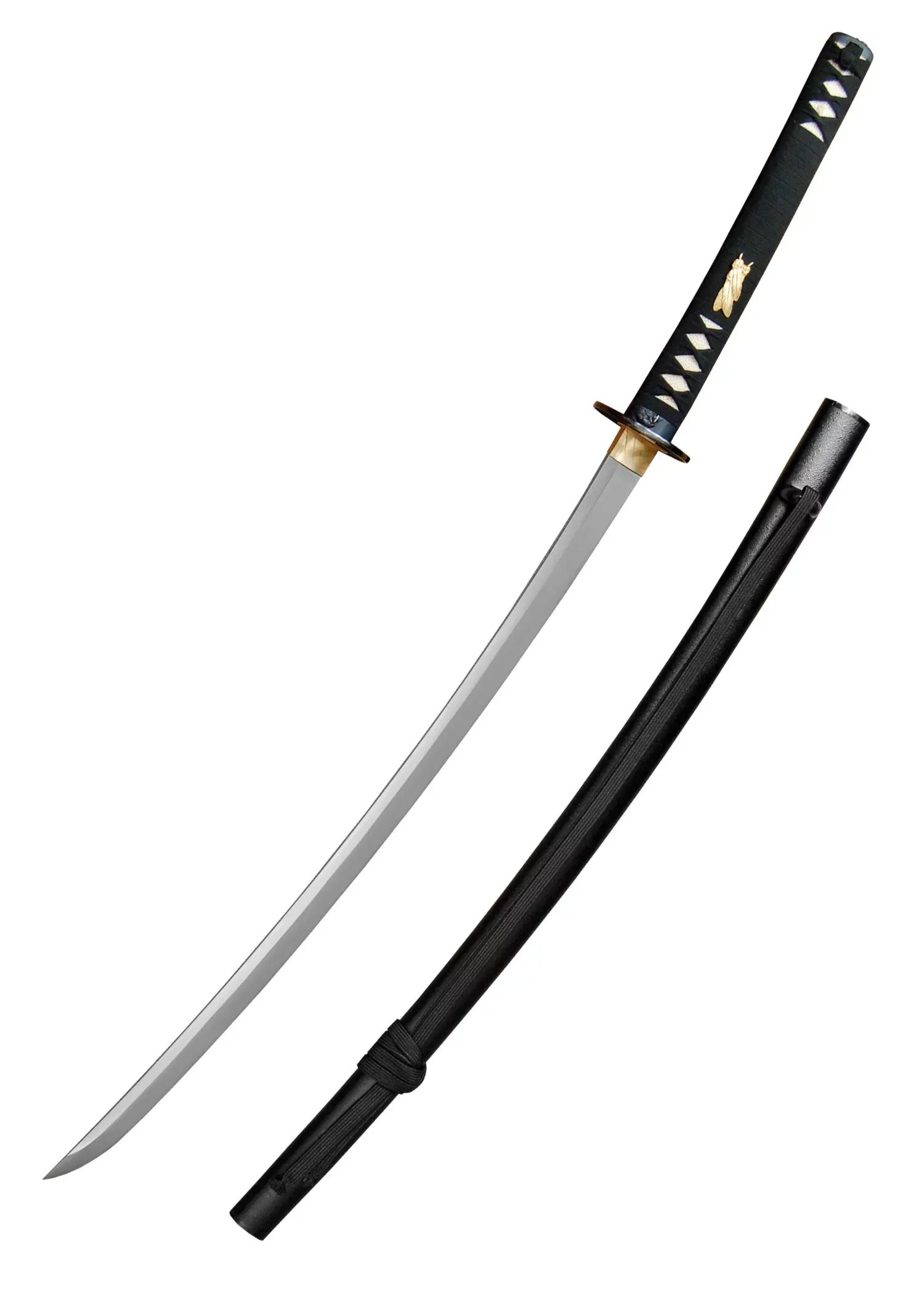
Unique Characteristics of Tamahagane Steel
Tamahagane is distinguished by its exceptional properties, ideal for making Japanese swords:
Balance Between Hardness and Flexibility
The combination of hardness and flexibility in tamahagane is crucial. This balance gives a katana its formidable sharpness while ensuring resistance to shocks and impact absorption.
Purity and Composition
Thanks to its manufacturing process, tamahagane contains very few impurities. Additional forging helps remove impurities and distributes the carbon, improving its structure and visual pattern.
Japanese Sword Forging Process
After obtaining tamahagane, the sword forging process begins:
Folding and Forging
The steel is divided into fragments, heated, its composition improved, and repeatedly folded to create layers of steel with different carbon contents. This results in a sword with a flexible core and a hard, sharp tip.
Cultural Significance Today
Tamahagane still holds a special place in Japanese culture, symbolizing art, discipline, and precision. Although today its production may be more ceremonial, it is still used to create modern knives and tools, keeping alive an ancient tradition that merges art with the science of metallurgy.
In modern knife and sword manufacturing, tamahagane is appreciated not only for its effectiveness but also for the beauty of the blades made from this exceptional steel. Katanas and other tools crafted with tamahagane are not just combat pieces but also cultural monuments reflecting a deep history rooted in Japanese traditions.
















